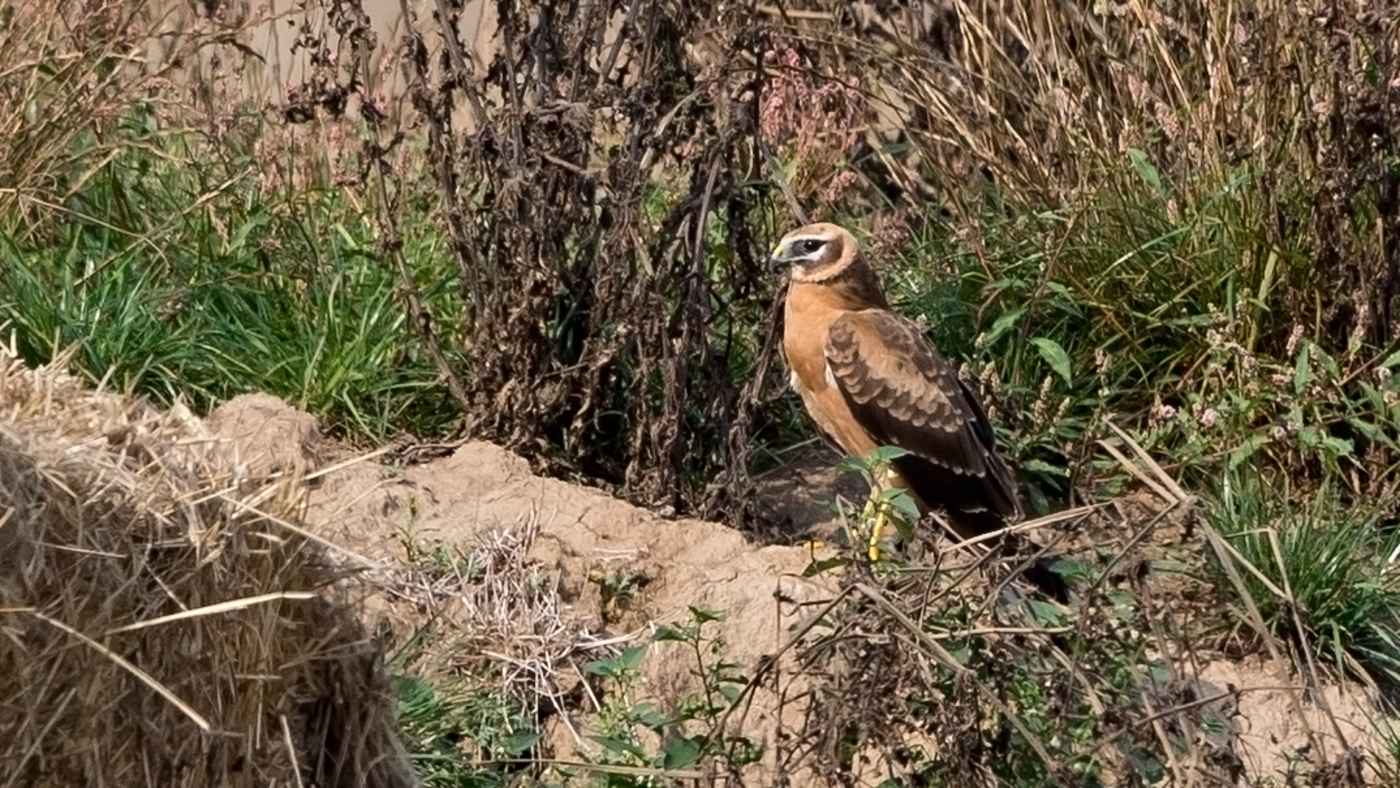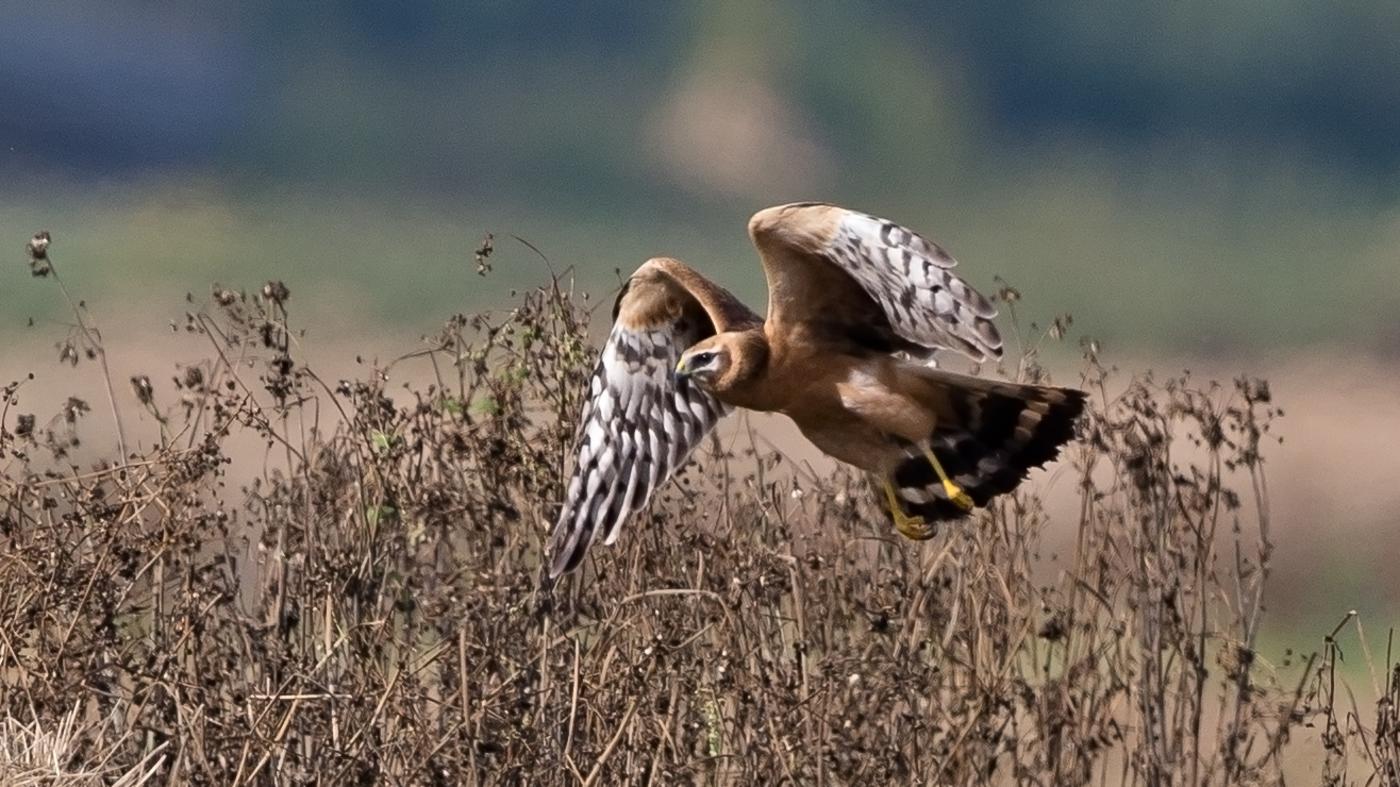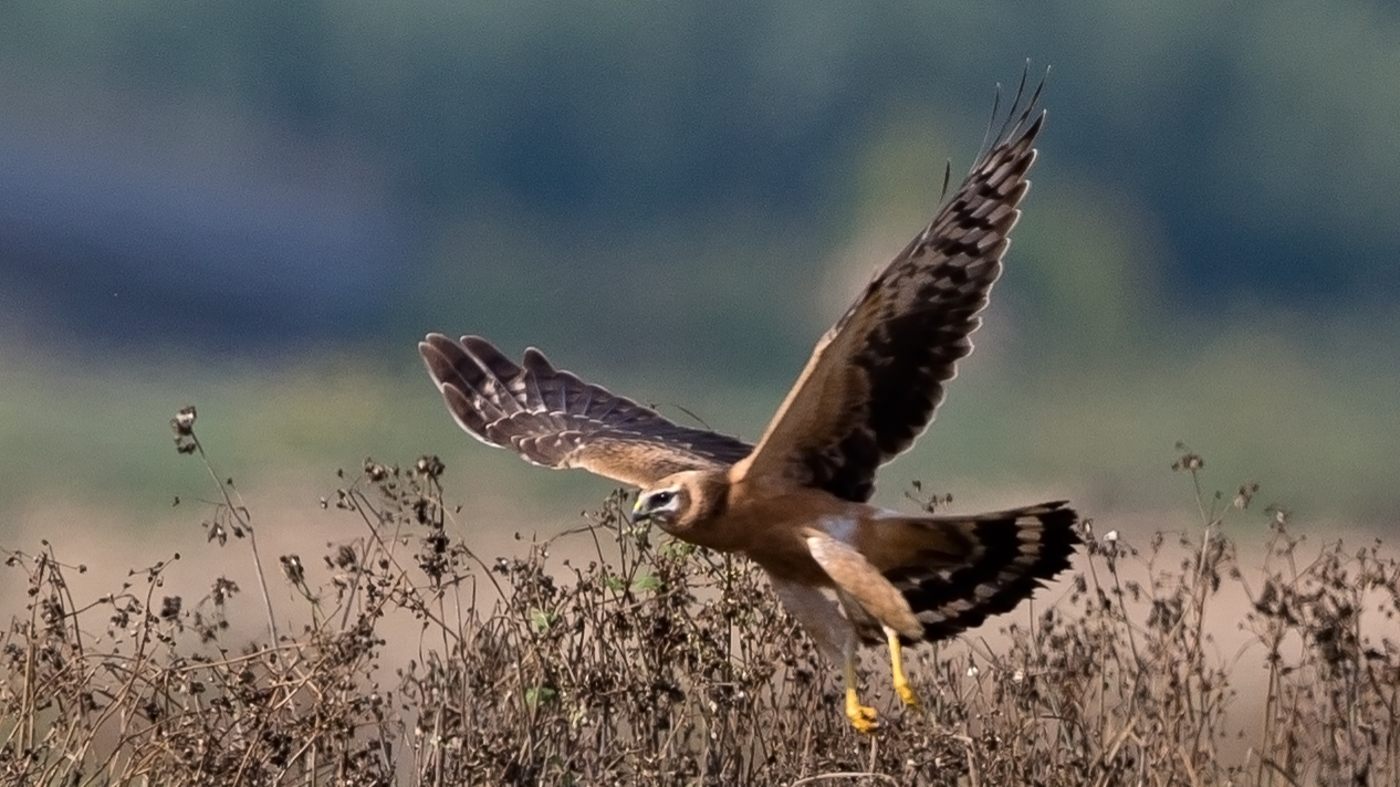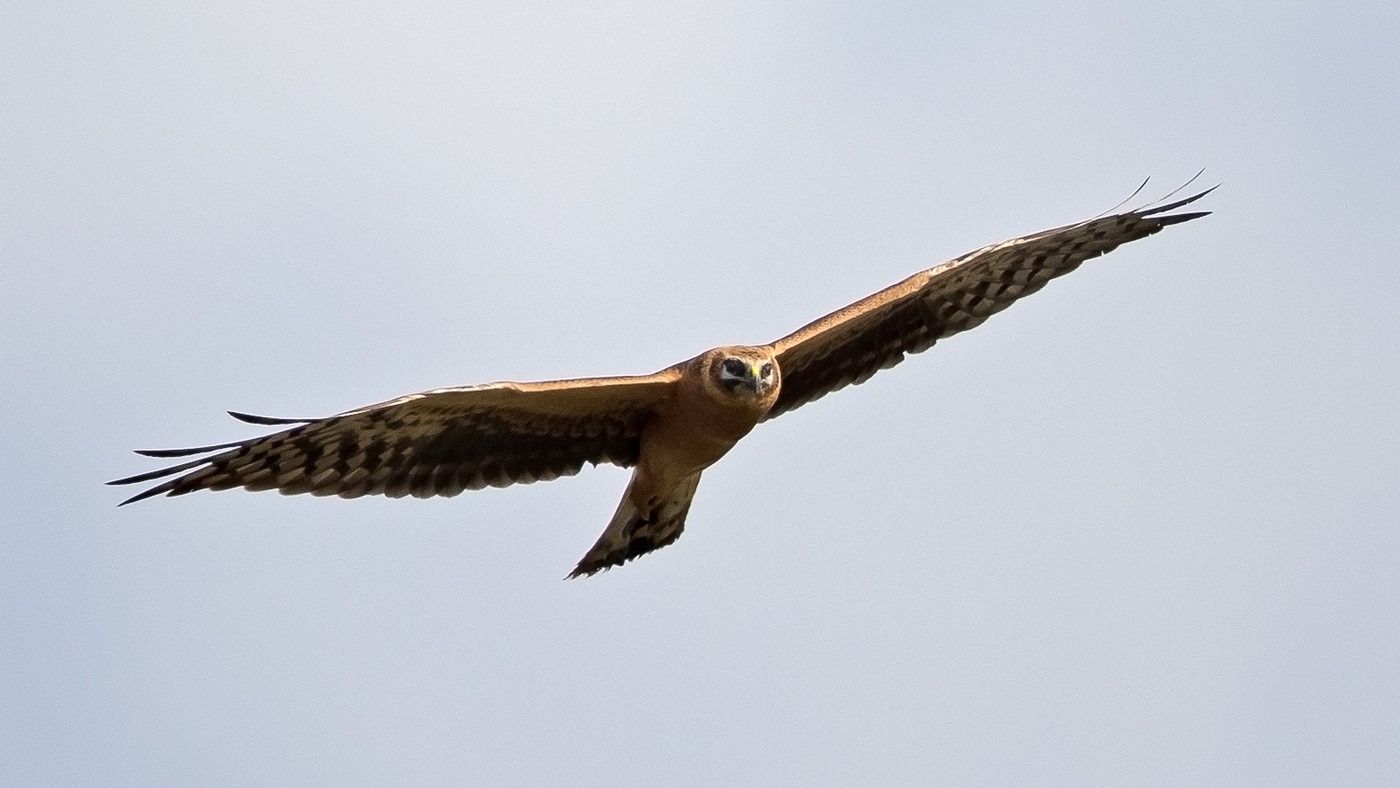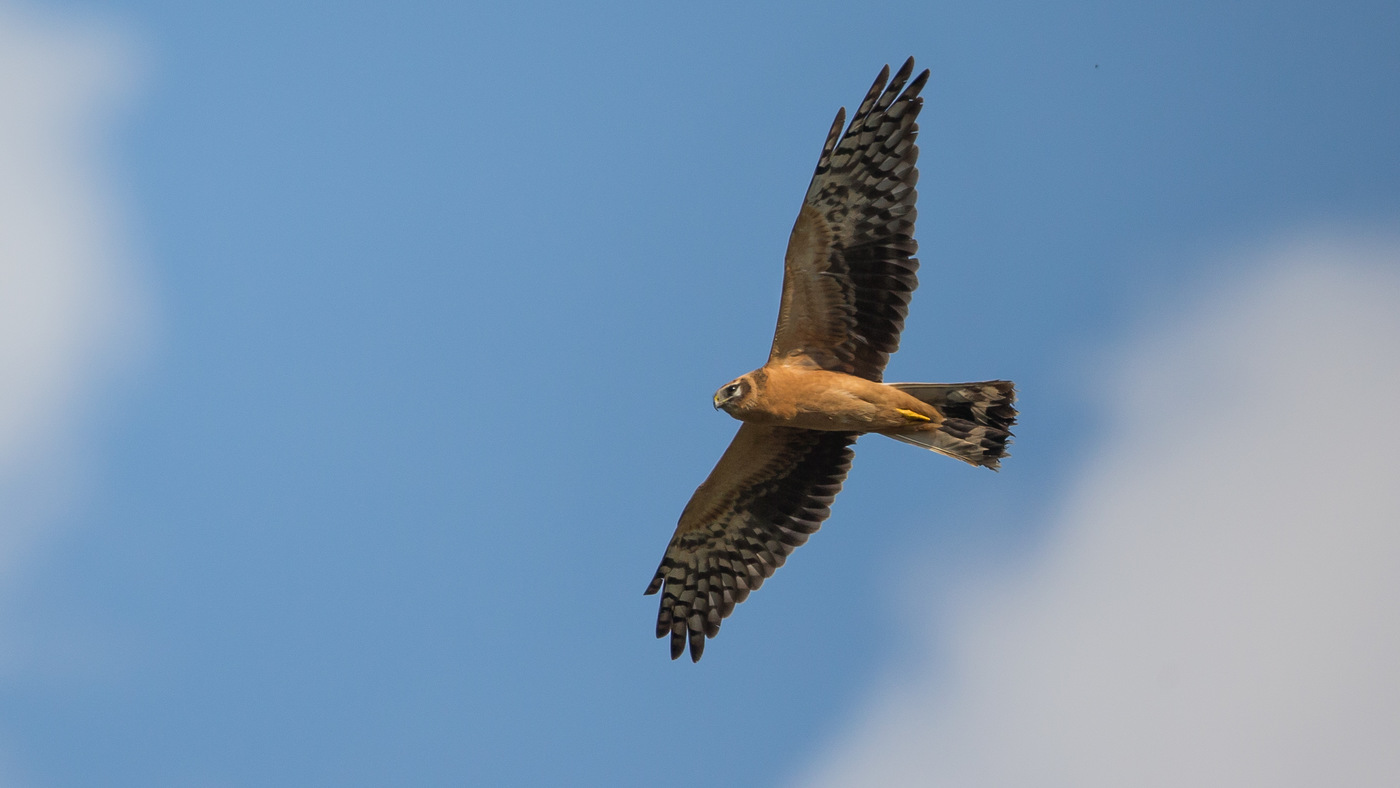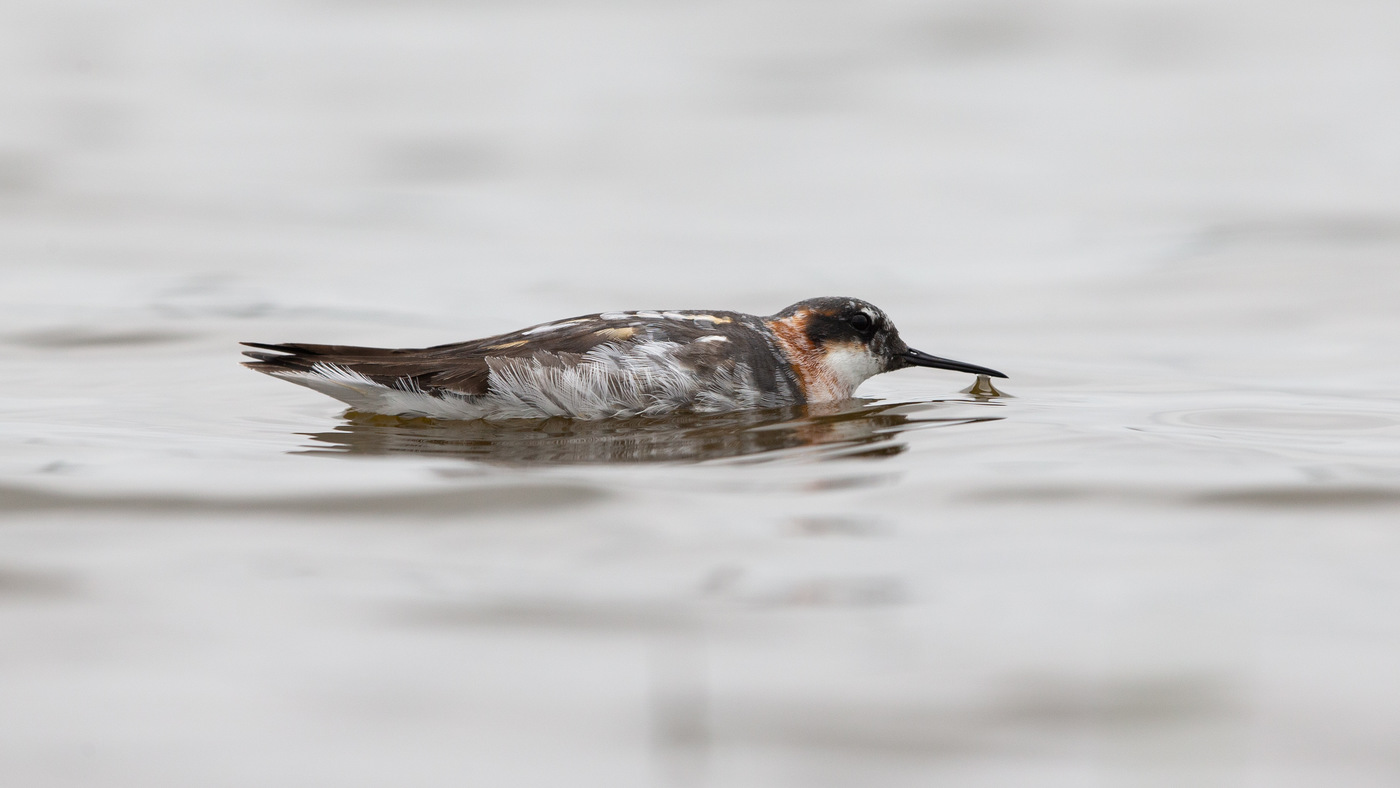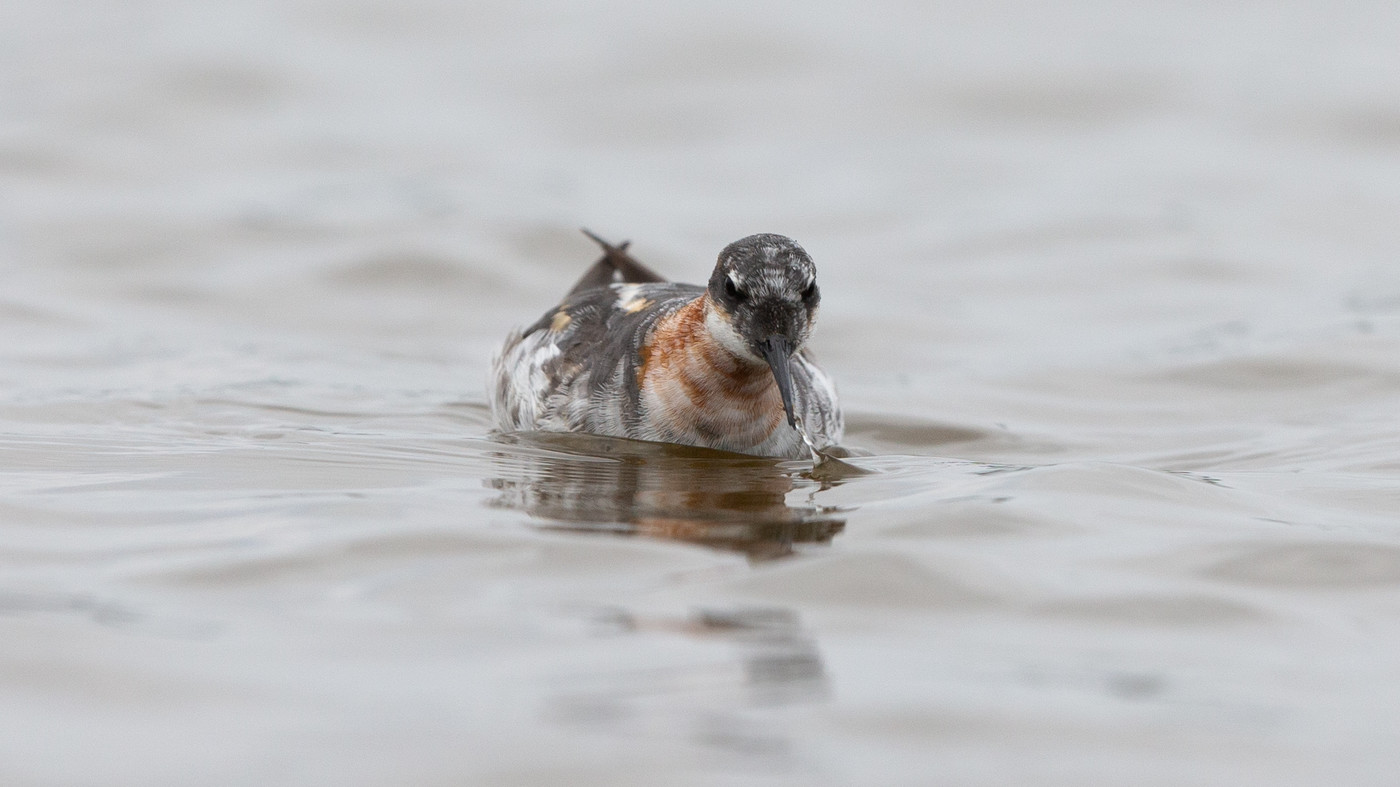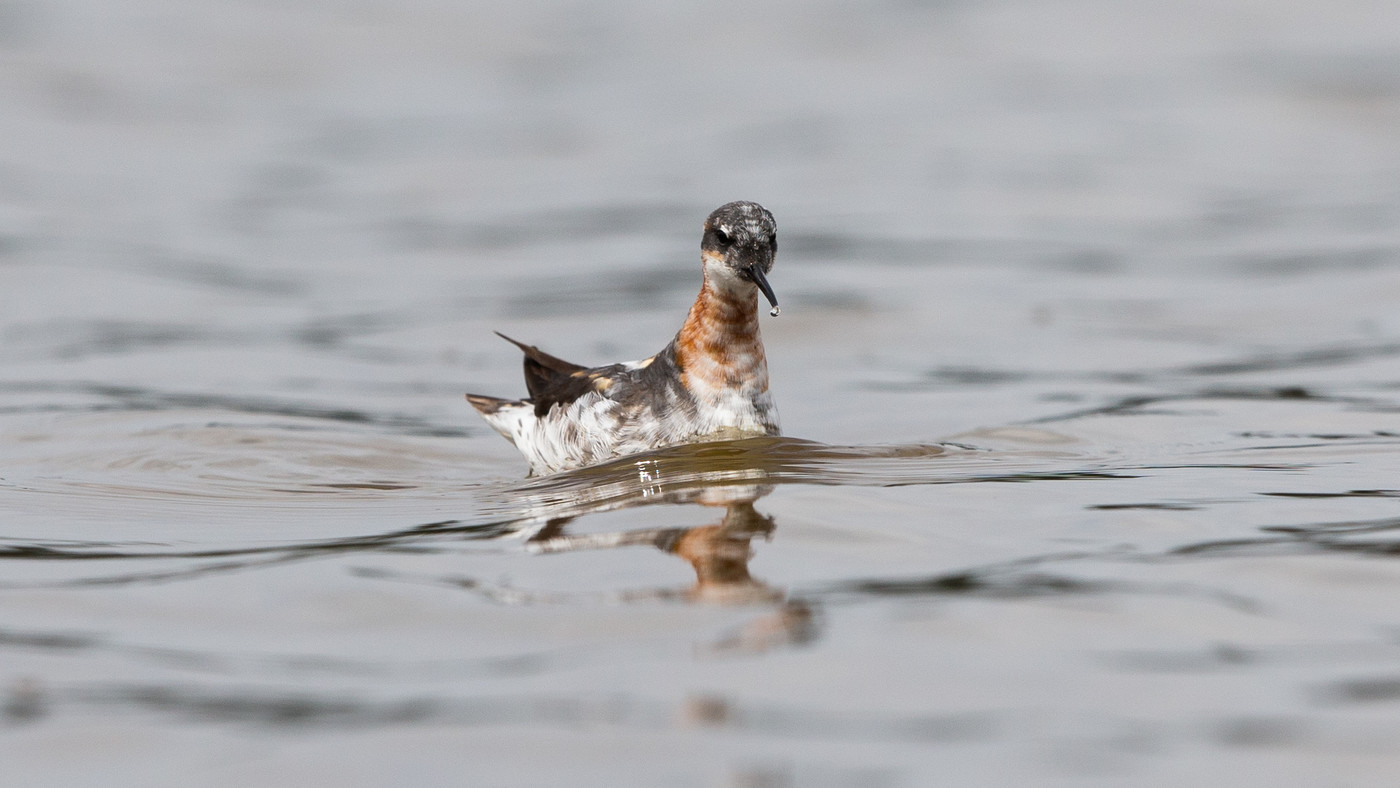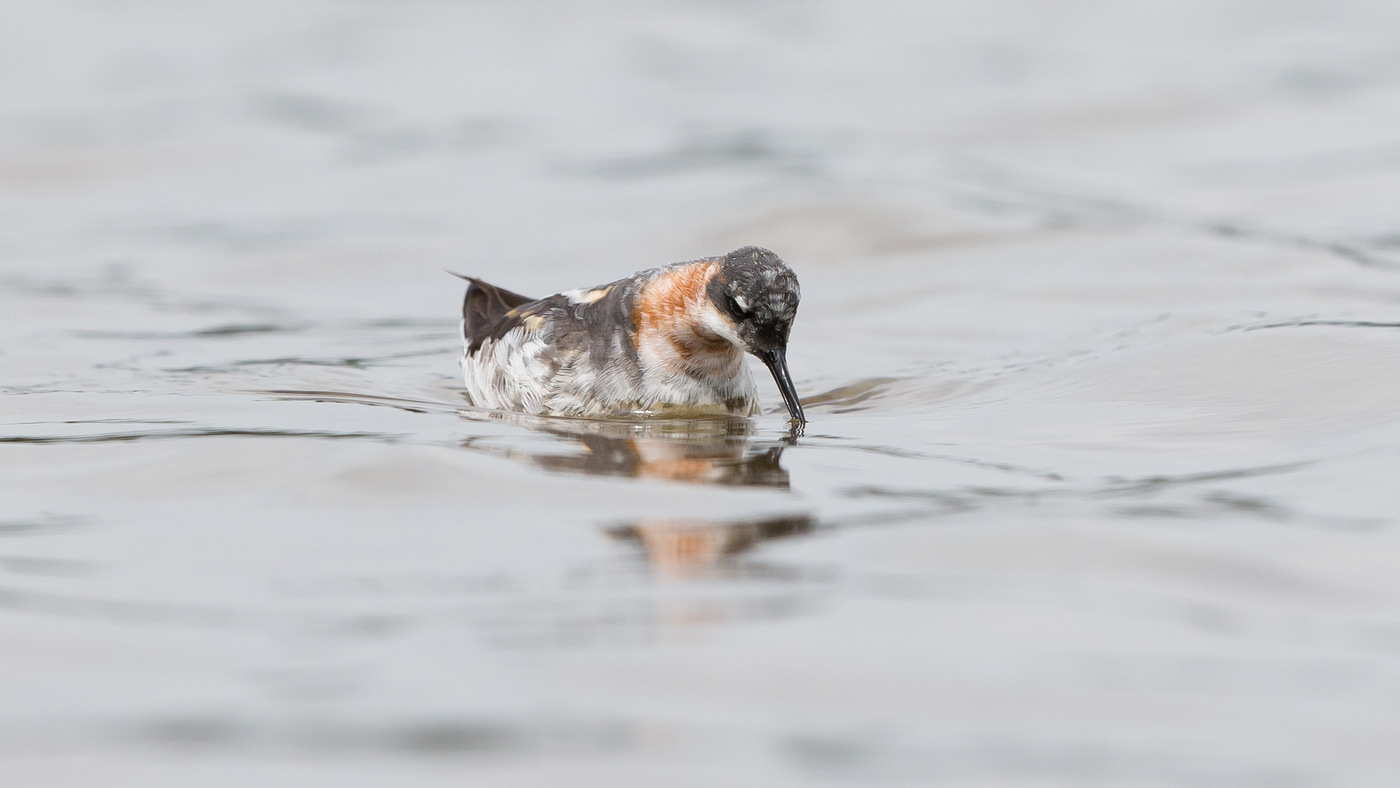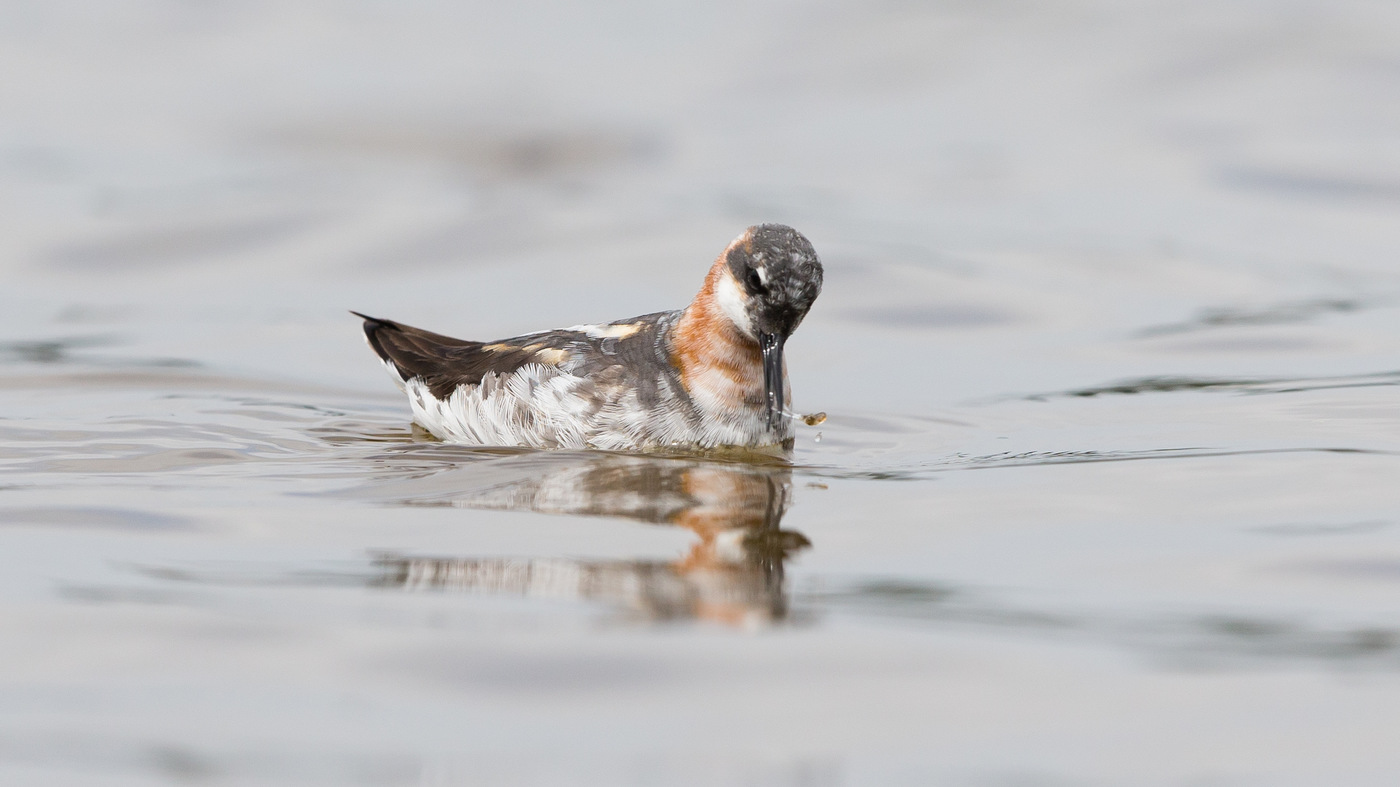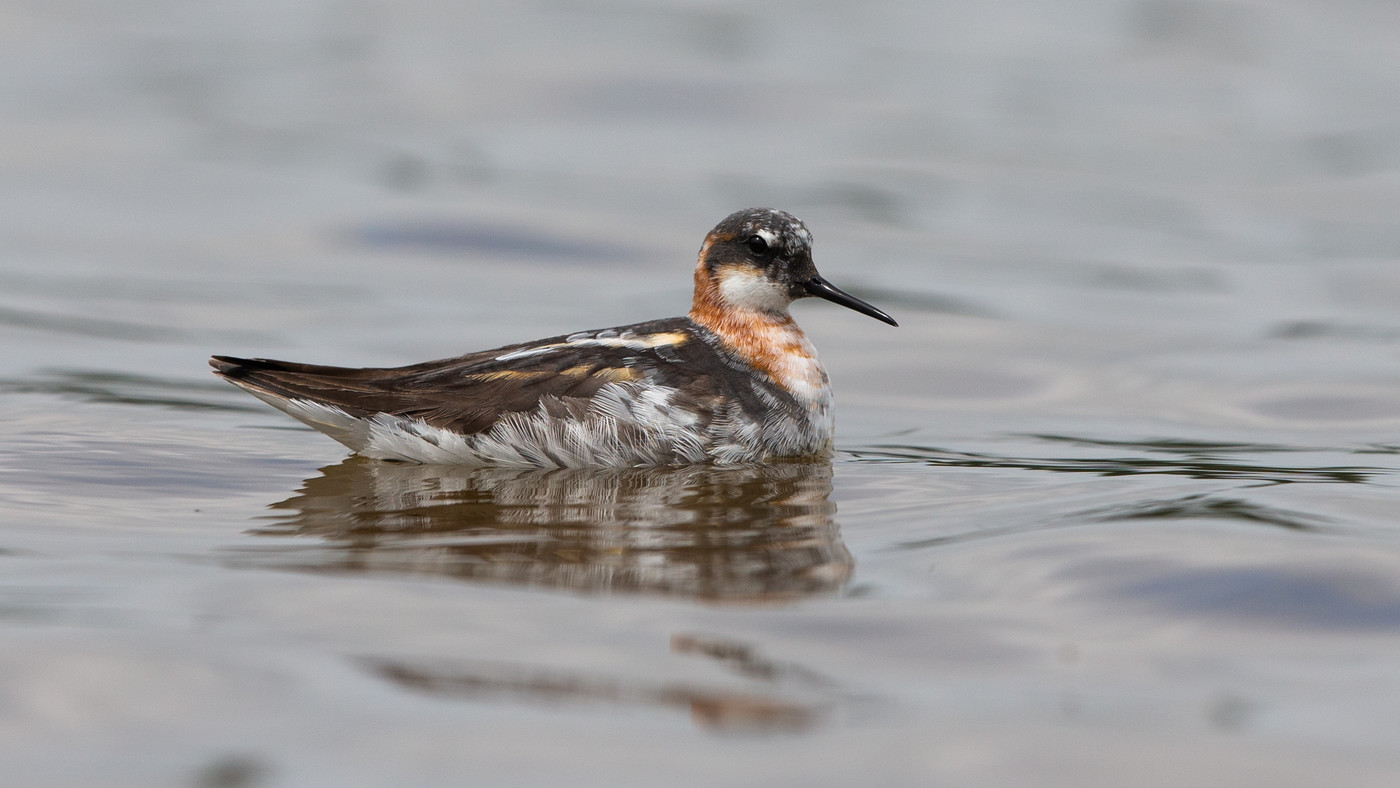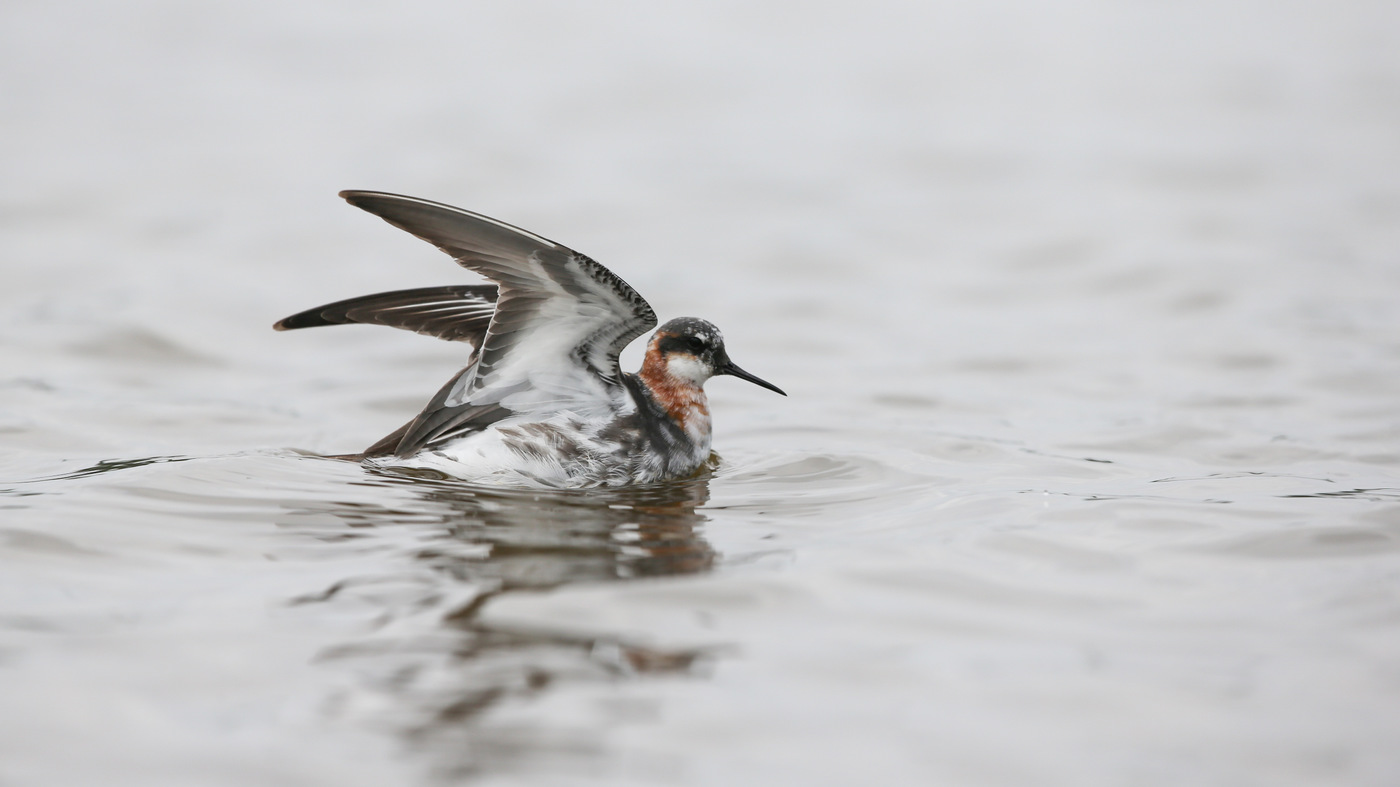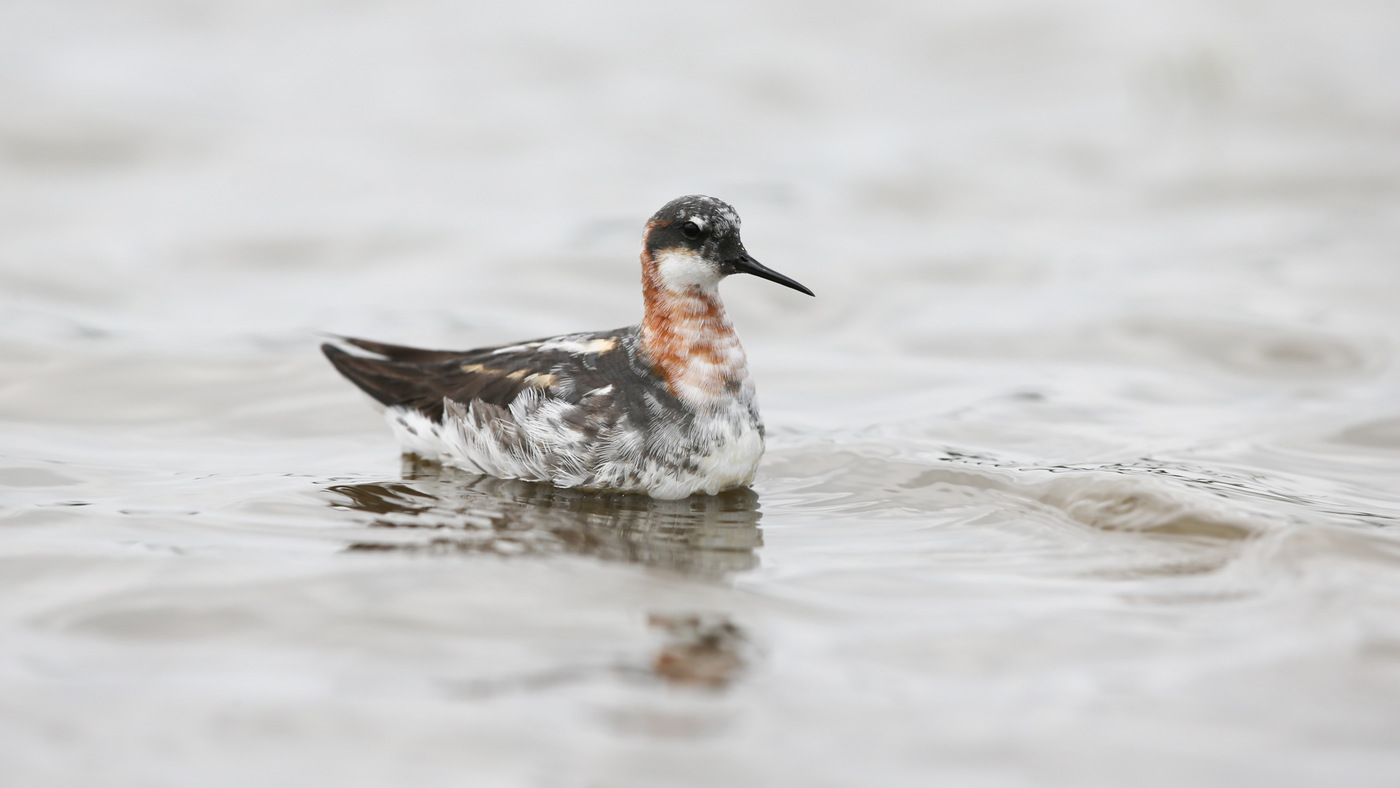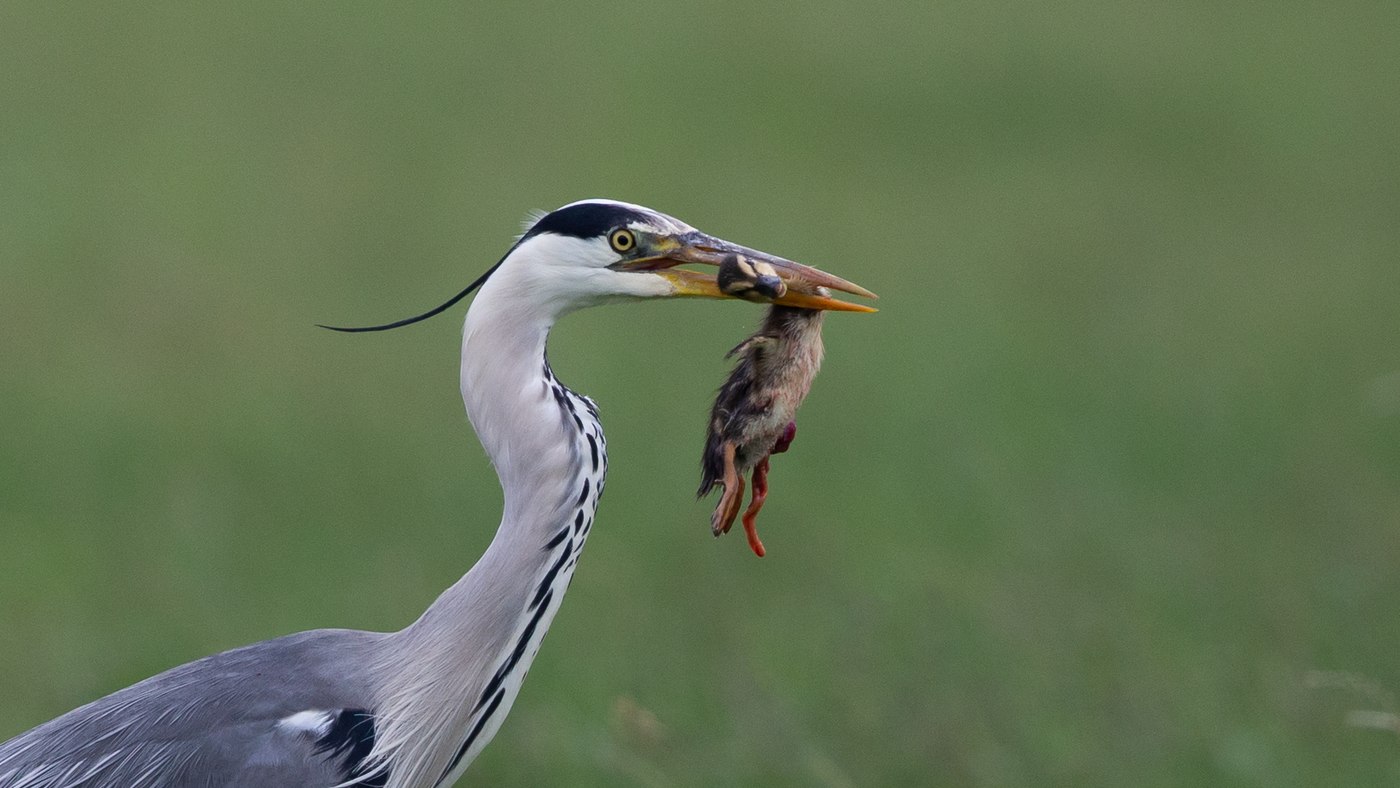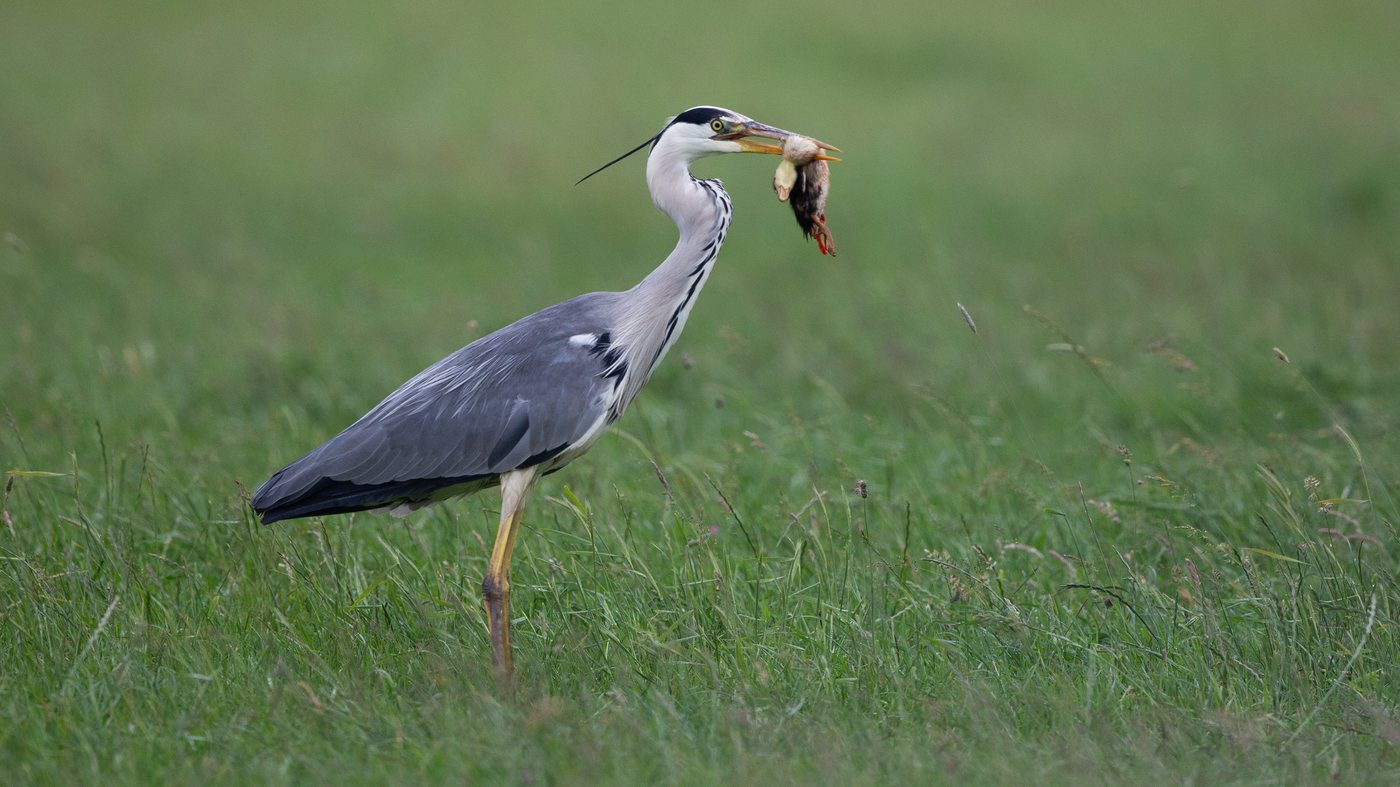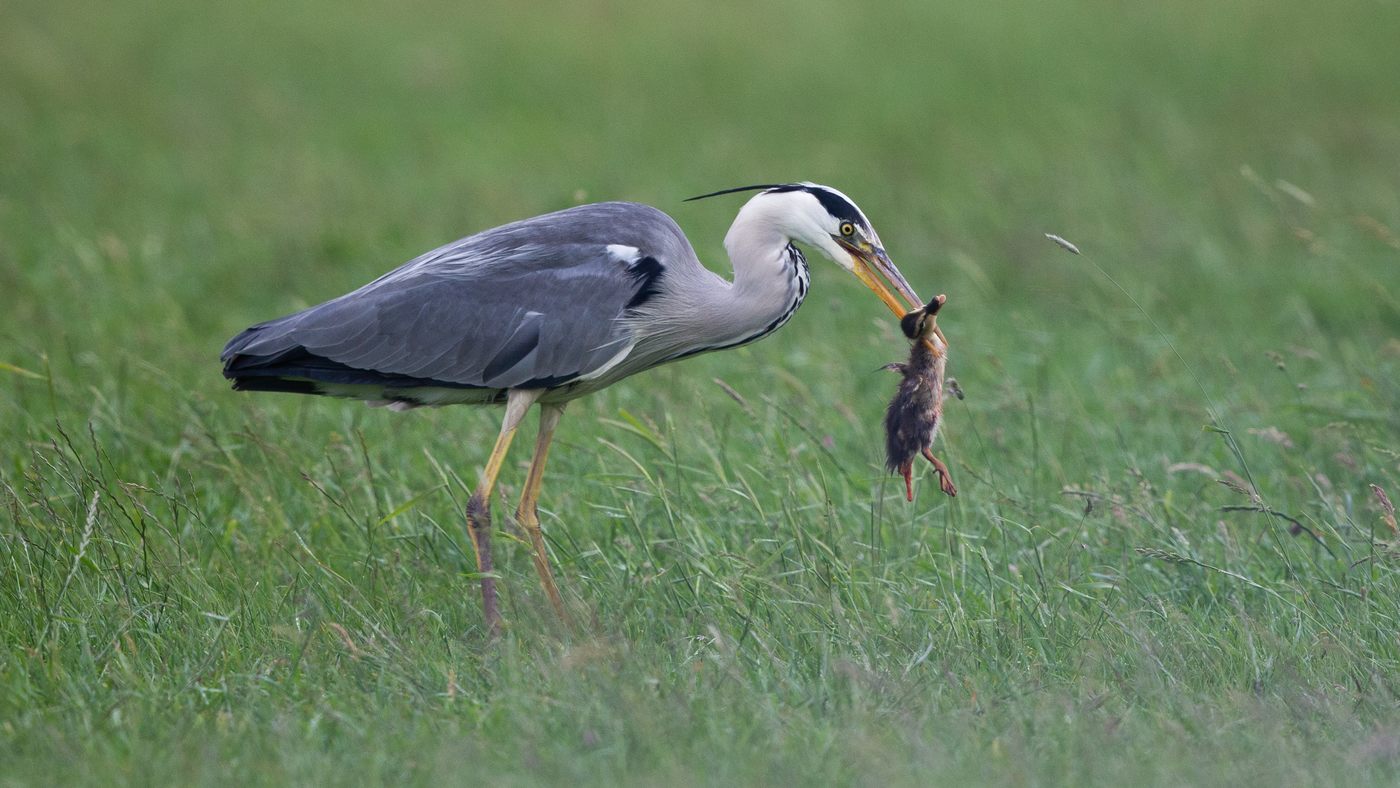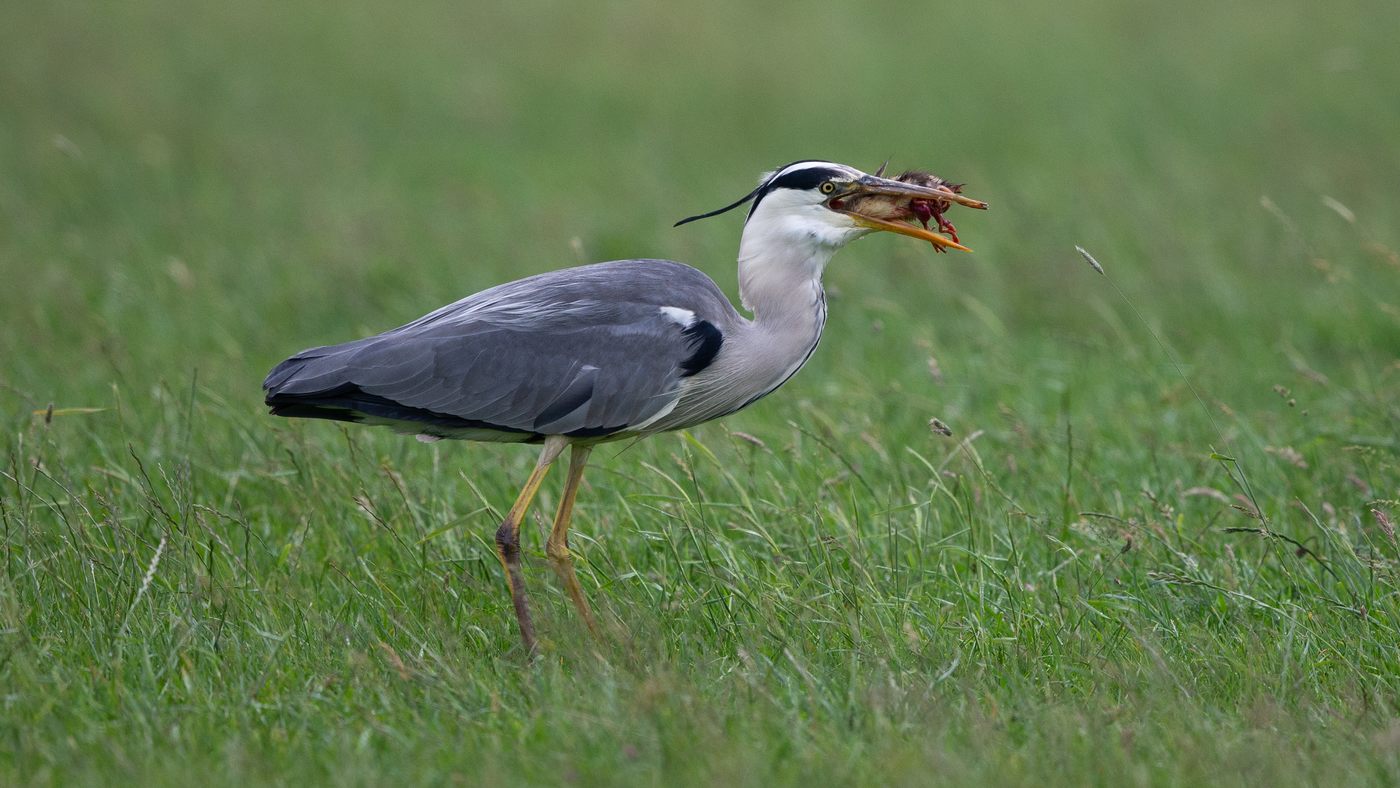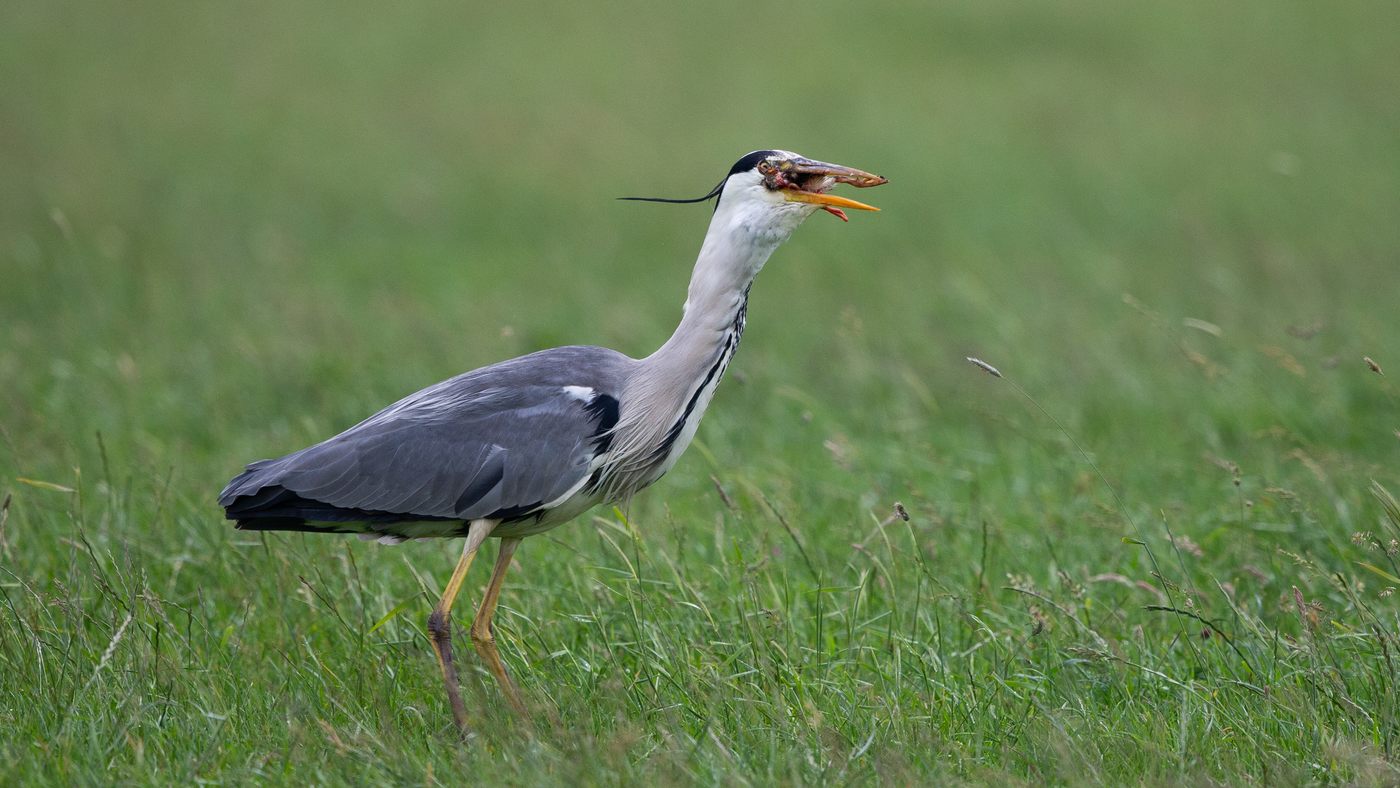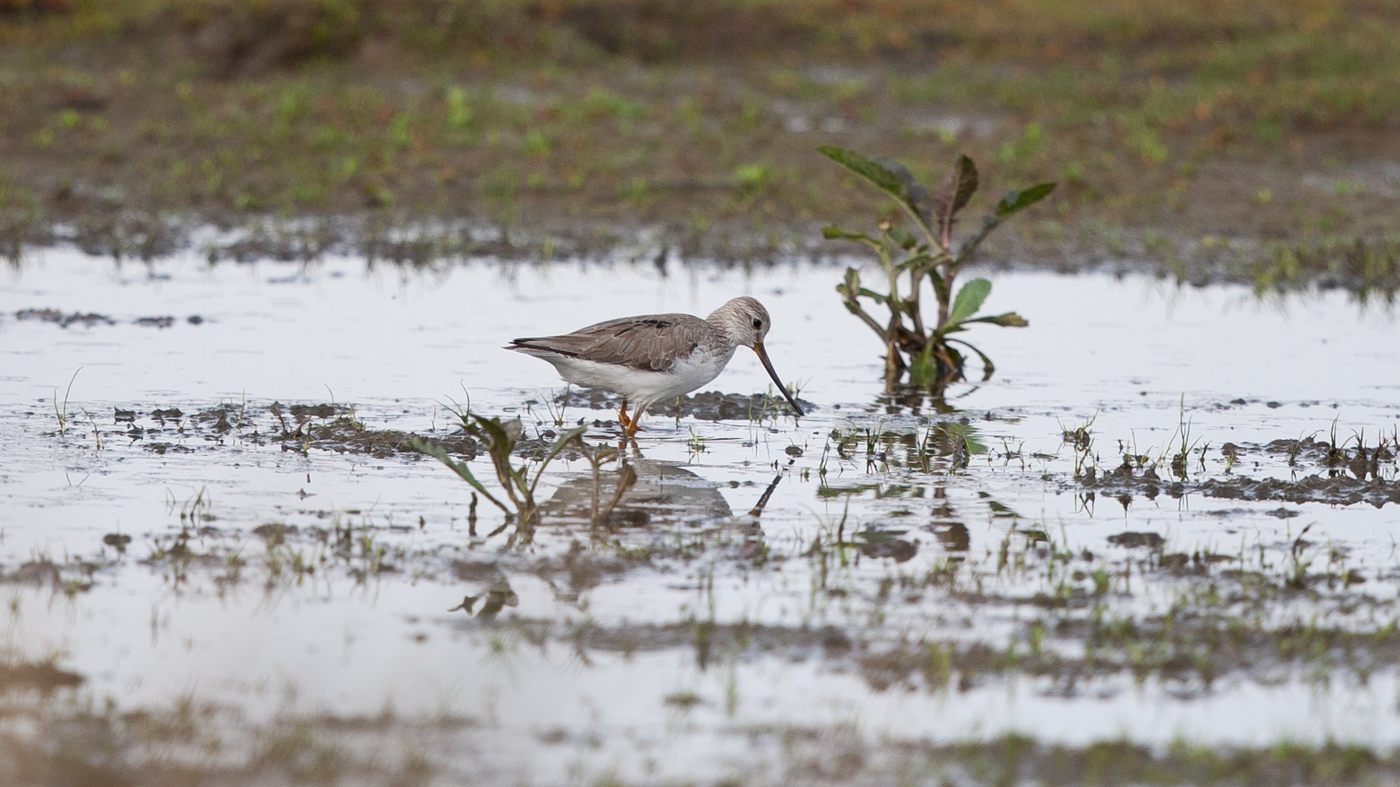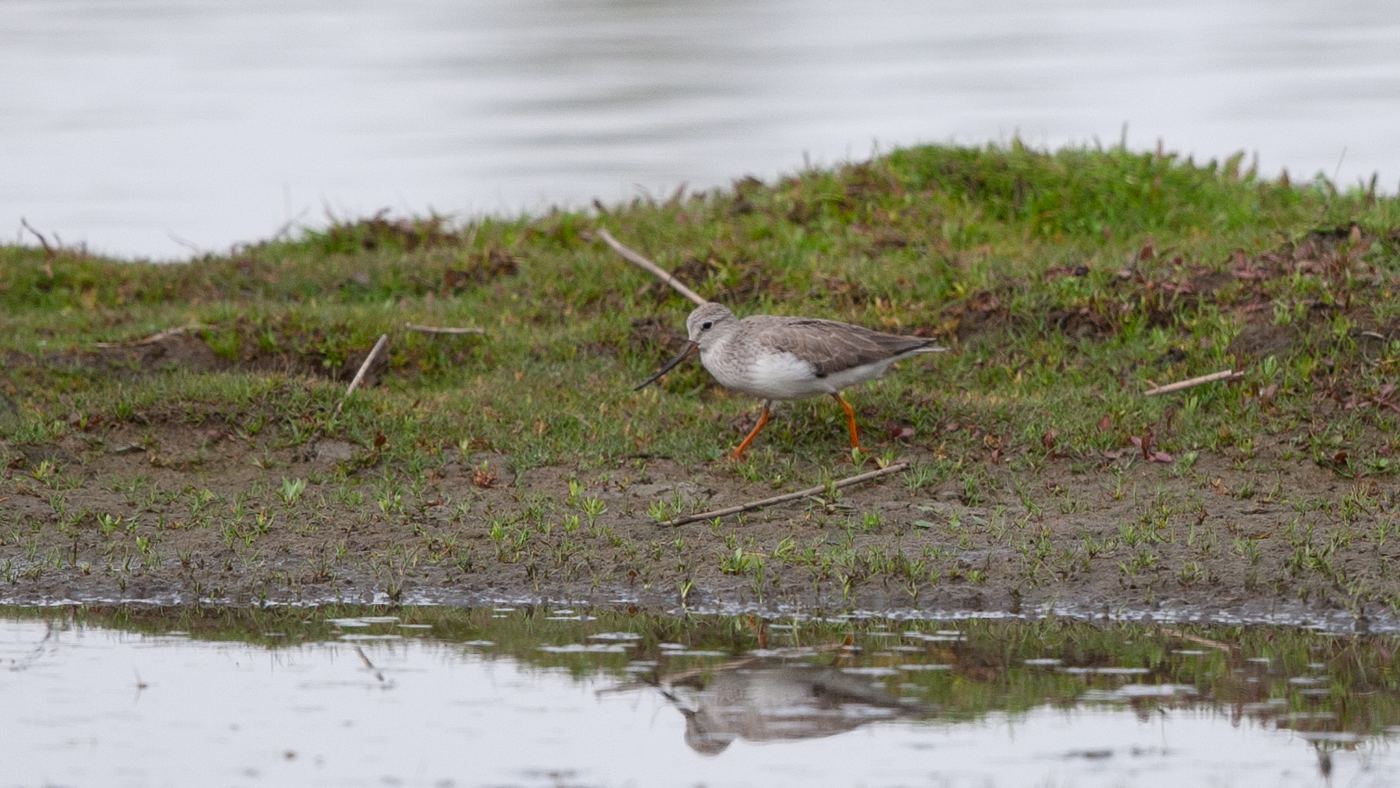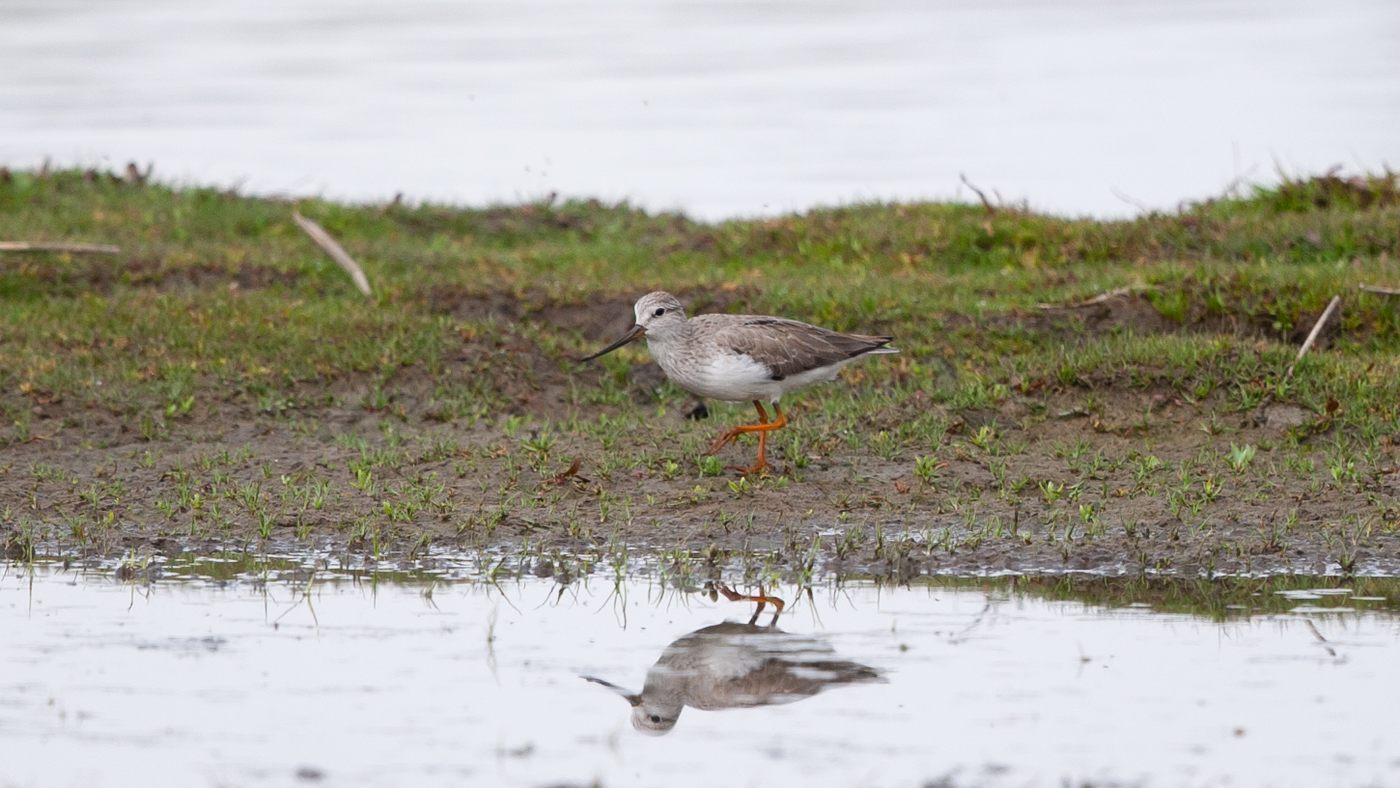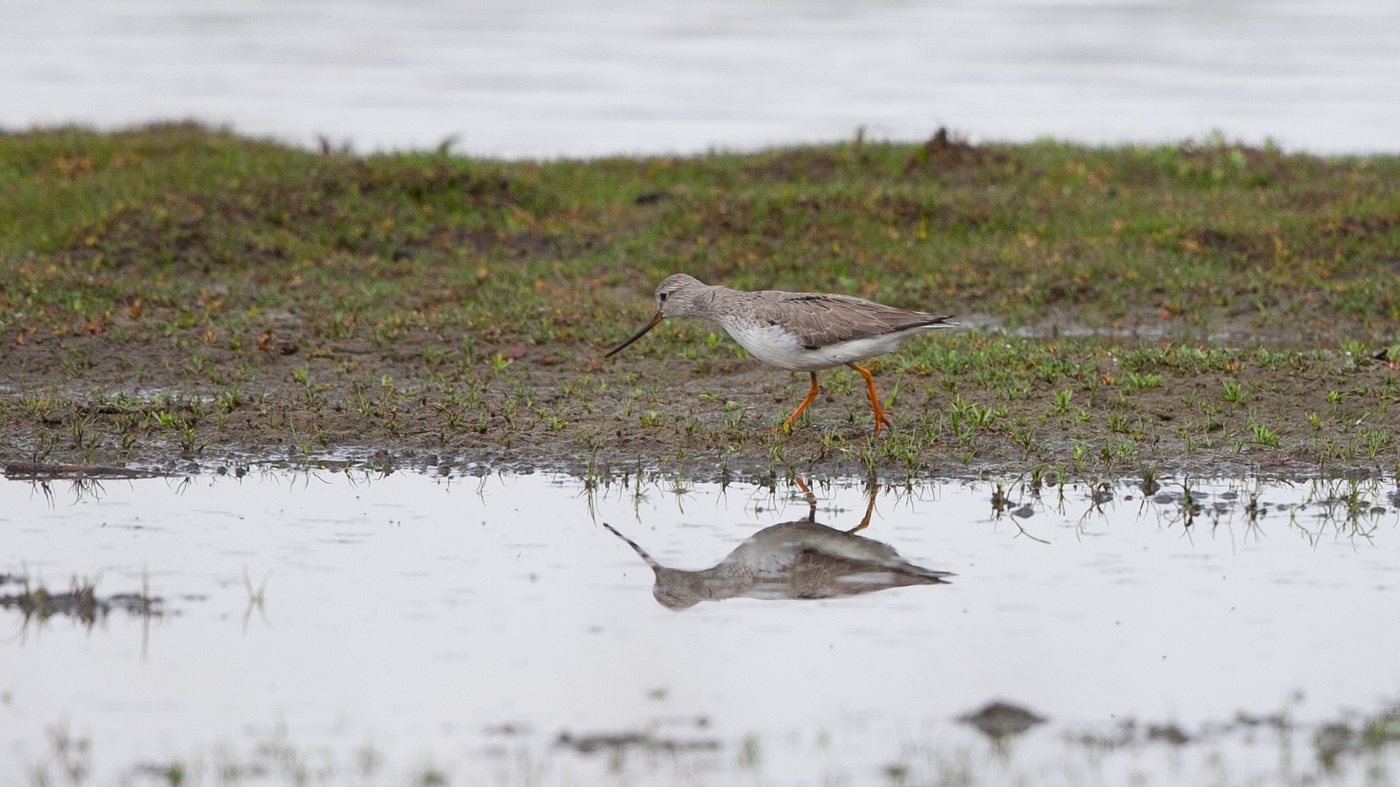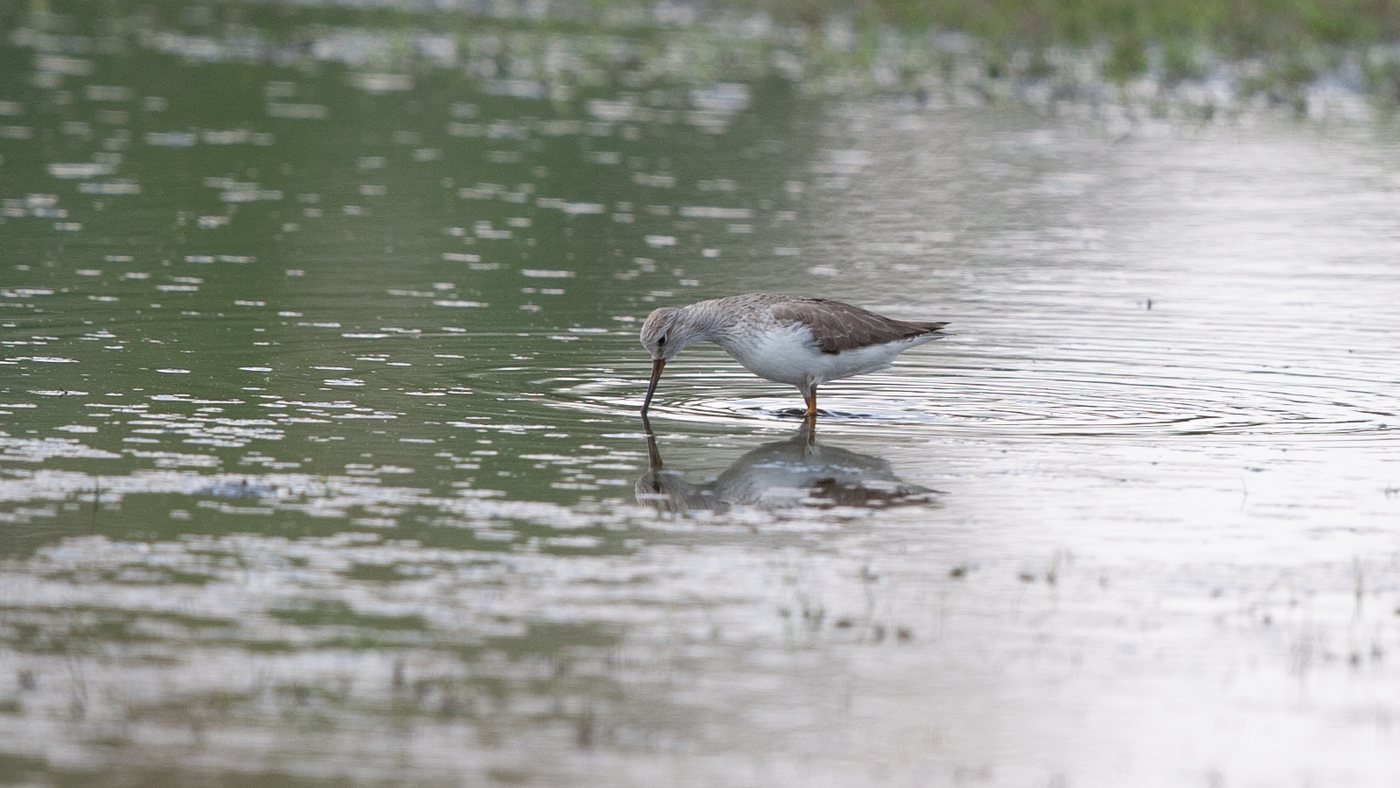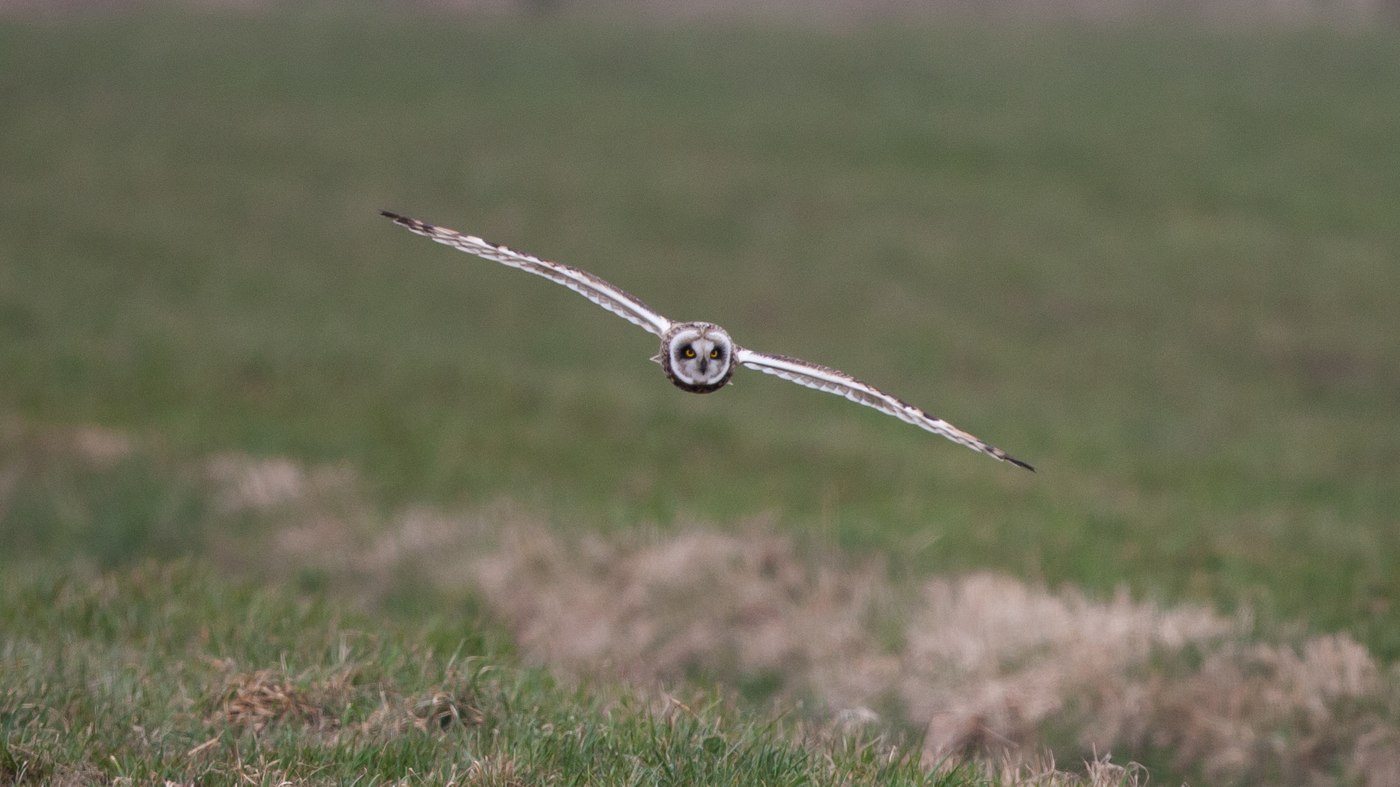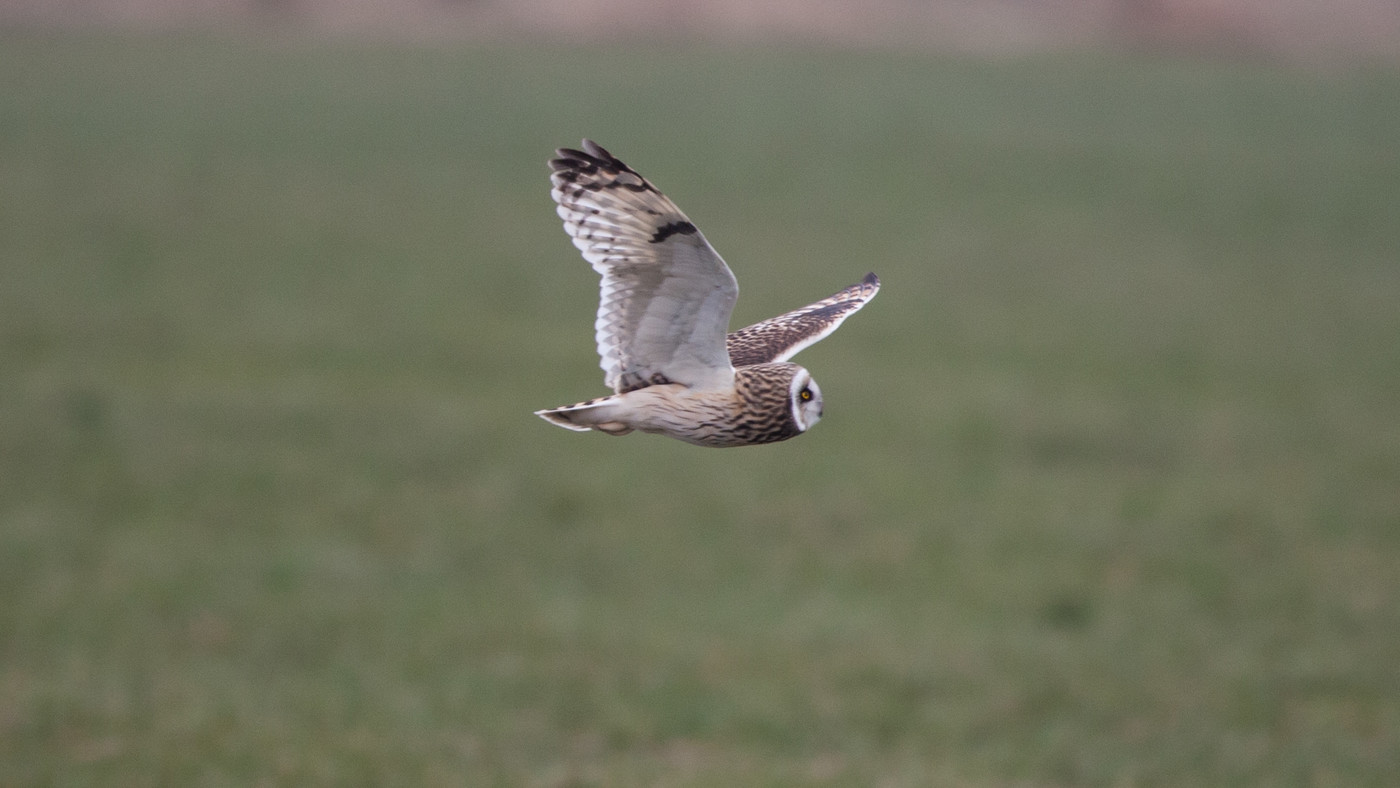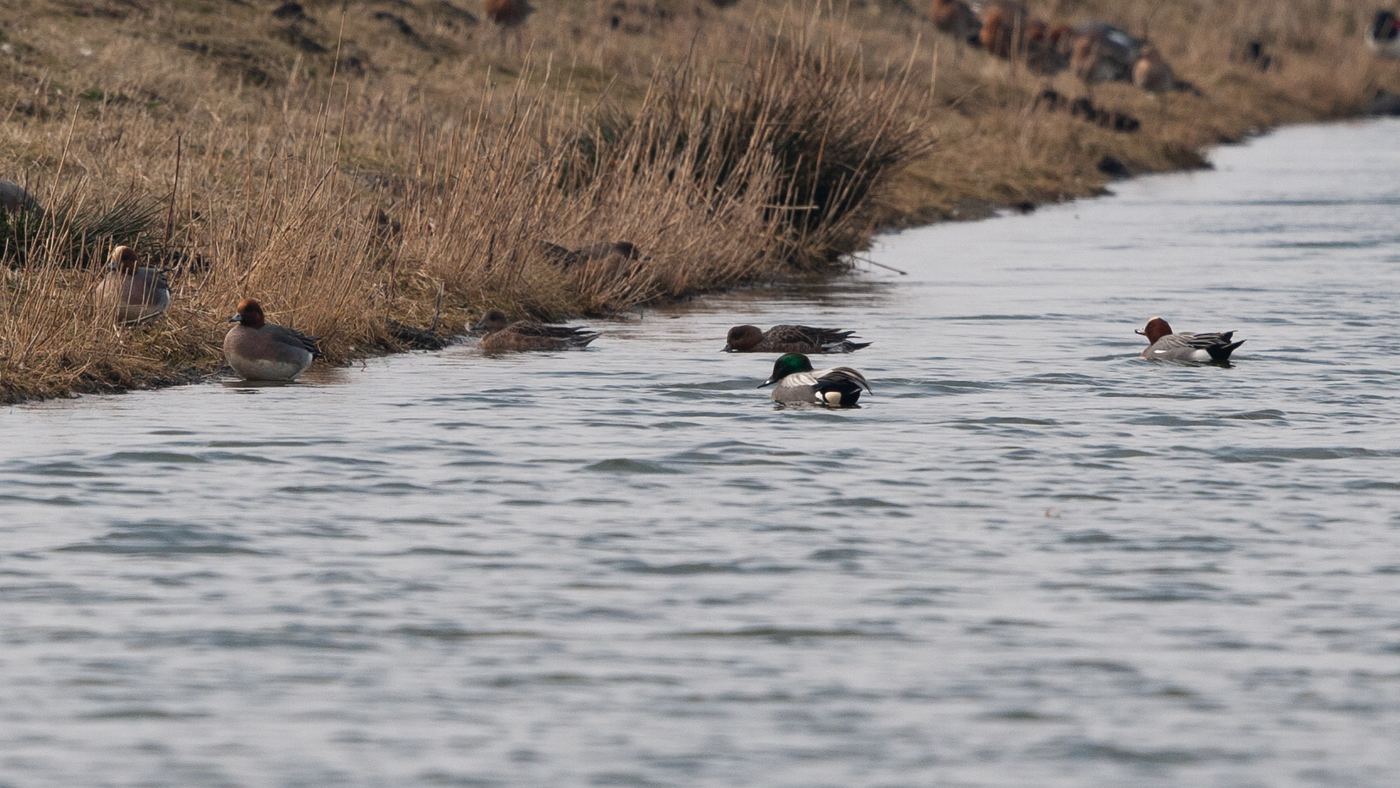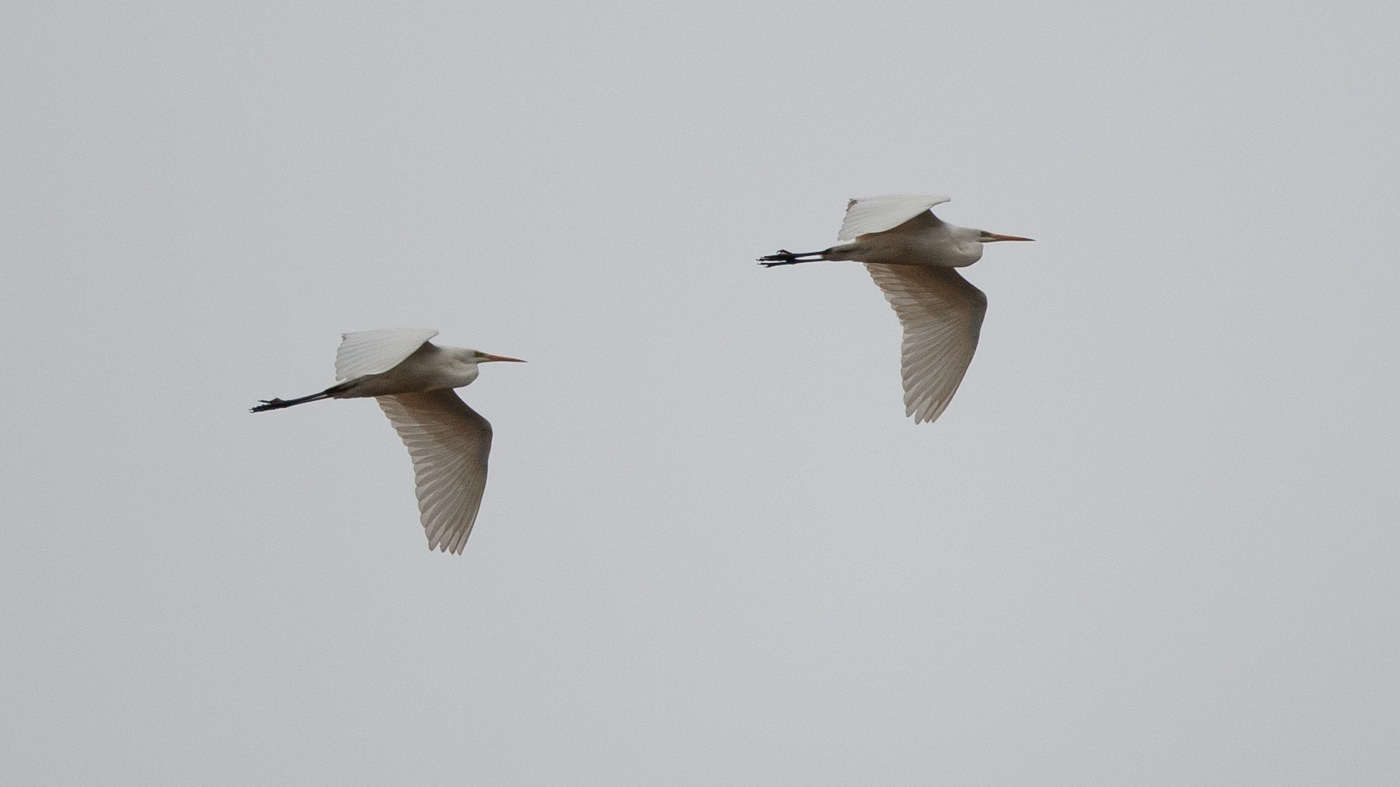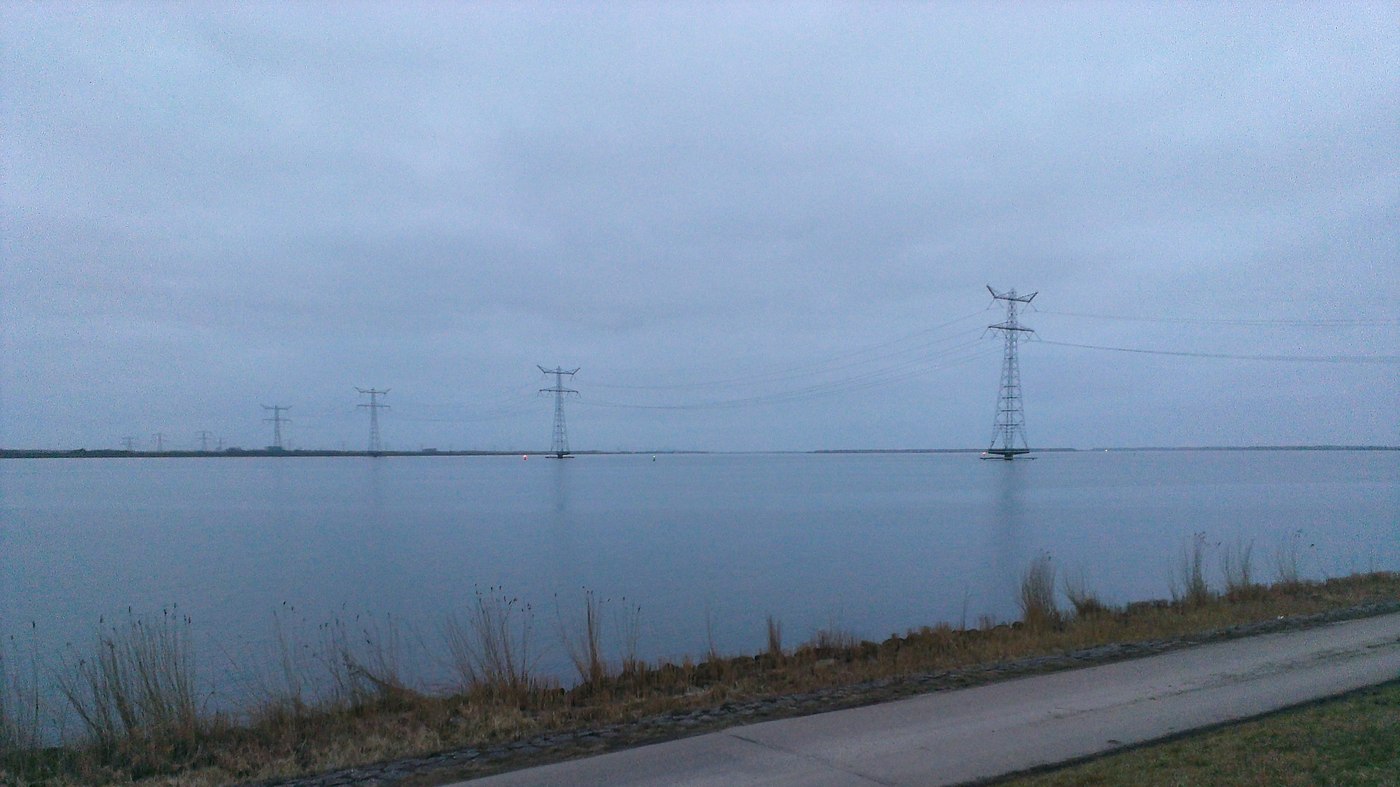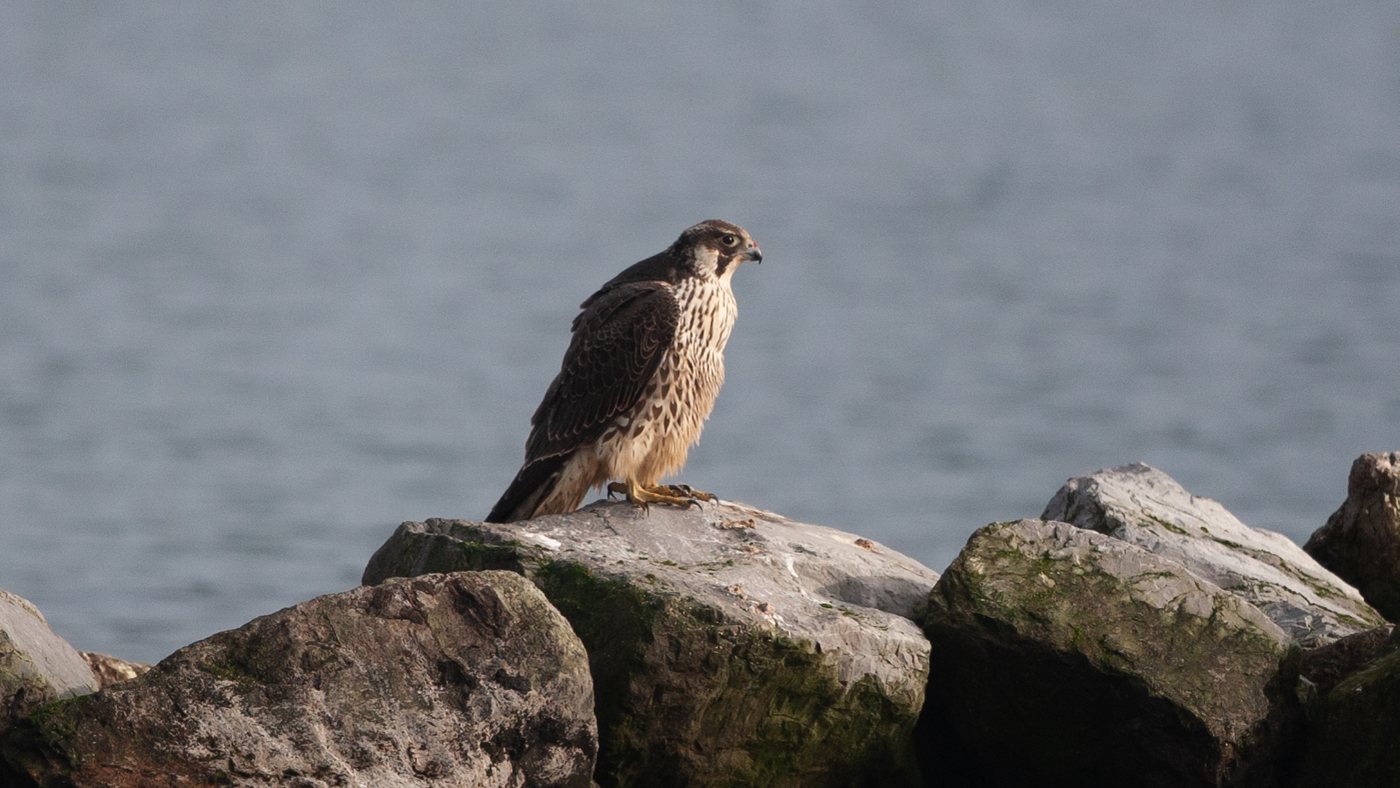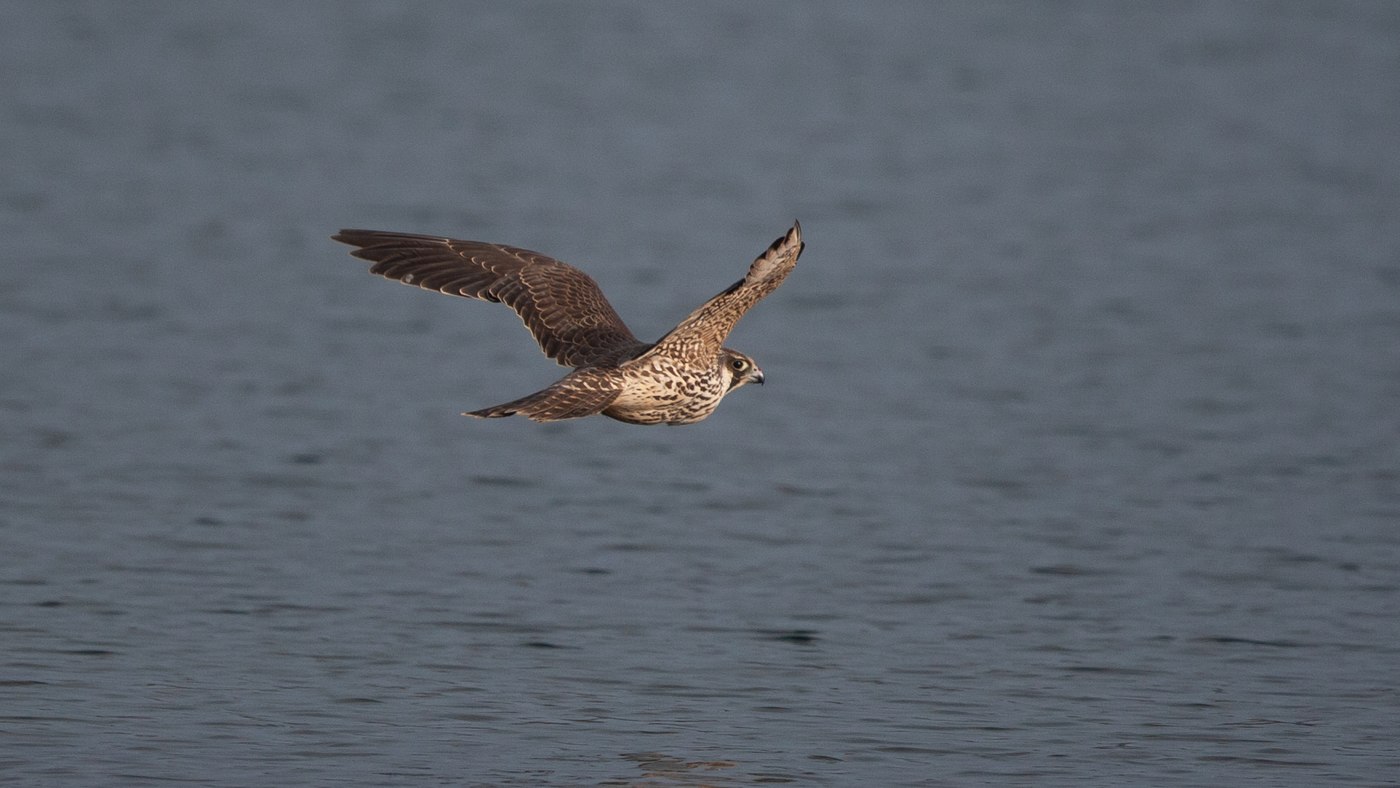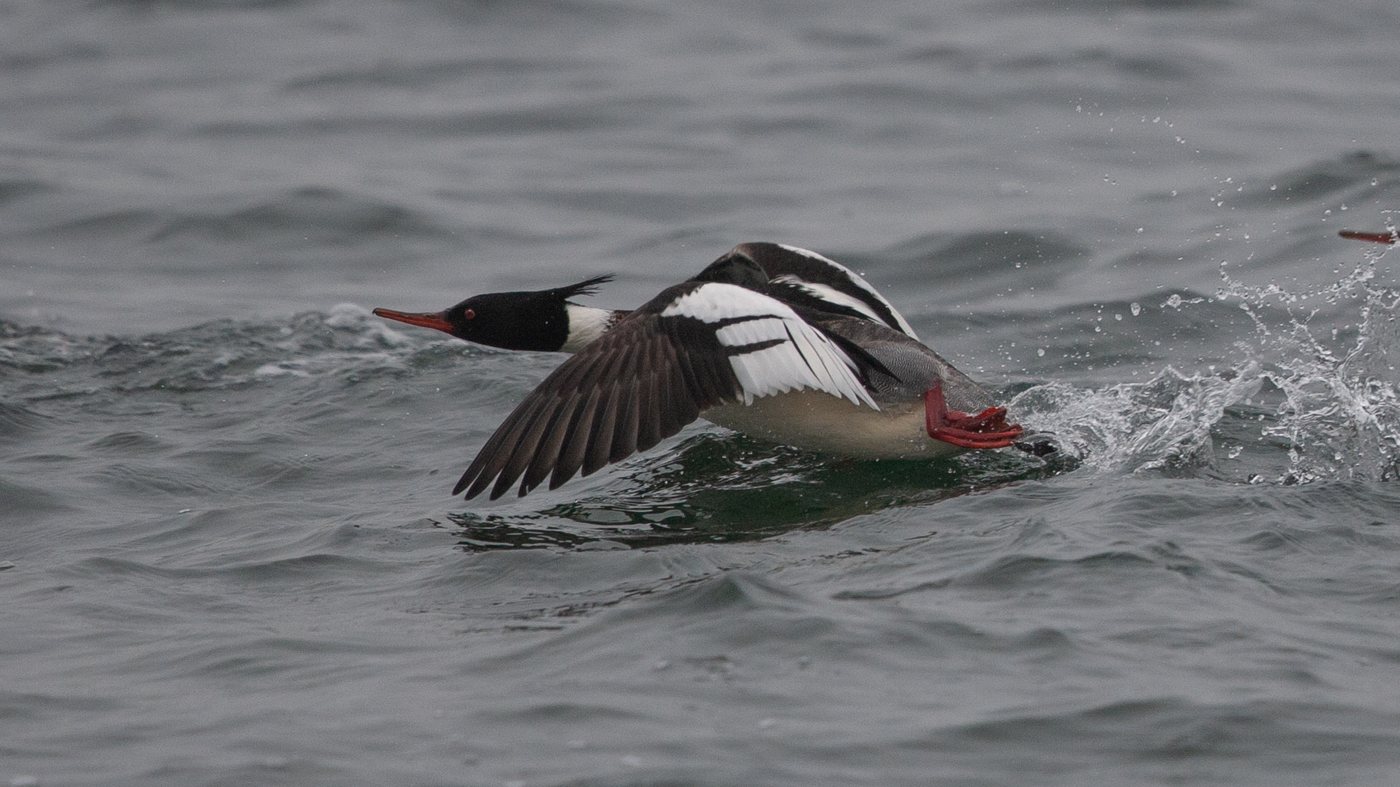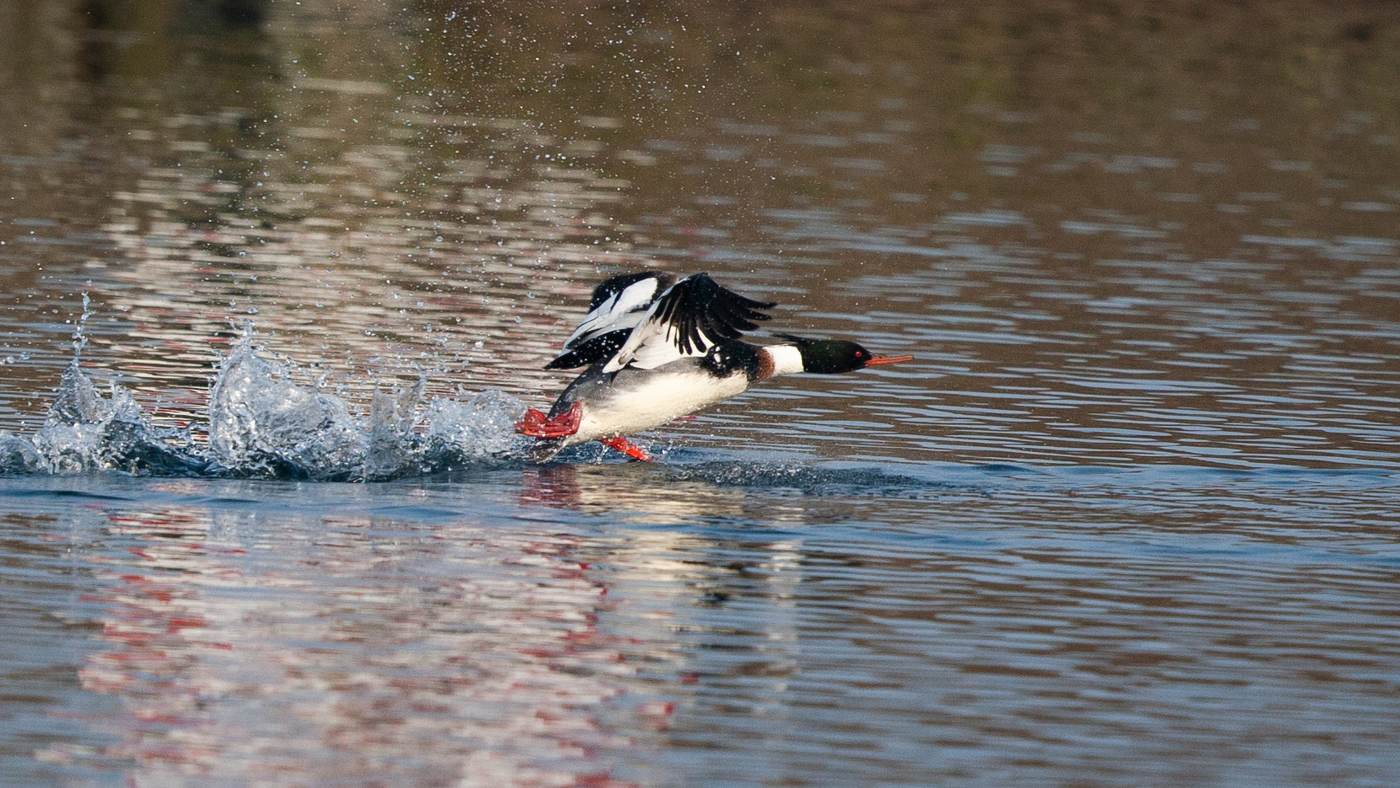An overview of de daily short birdtrips
08-09-2013 Sunday: Pallid Harrier in The Brabantse Biesbosch
After the Palearctic there was time to take a long lie the next day. The Pallid Harrier which was discovered yesterday in the Brabantse Biesbosch was reported again in the morning. A nice option for the afternoon, at least when it stopped raining. Around noon it was dry and I got in touch with Thijs if he wanted to join me.
Thijs was willing and around half past one I picked him up in Veghel. The bird was not reported since eleven o'clock, but we wanted to try it anyway. Upon arrival in the polder we saw that several birders were searching. We drove a short round without result. When coming back at the spot where he was seen this morning Thijs saw a ringtail flying from the corner of his eye.
However, the bird landed immediately, and after some searching was found back on a hill. Indeed it turned out to be the Pallid Harrier. That was not too bad after a 10-minute search. The bird was some distance away but I managed to make some nice photos. The Pallid Harrier is number 302 on the annual list.
20-07-2013 Saturday: Impression of a Red-necked Phalarope
Last Saturday a Red-necked Phalarope was found while we were migration counting at the Camperduin. The bird was a short distance away and we went to take a look after the count. We found an adult female that was moulting to winter plumage. The bird was very tame and there were nice pictures taken. Here is an impression.
23-06-2013 Sunday: Grey Herons are real robbers
During a search for a English Wagtail we saw this Grey Heron take a young Mallard. The poor Duckling struggled considerably but was no match against the sharp beak of the Grey Heron and was out of his misery quickly.
With the size of the prey the Heron had absolutely no problem and the bird disappeared soon, virtually intact towards the stomach. With mixed feelings we continued our quest forth and not long after we found the female English Wagtail.
29-05-2013 Wednesday: Terek Sandpiper near Spaarndam
All week now a Terek Sandpiper is located near Spaarndam which allows relatively short distance views and photographing. I already have the Terek on my year list at the Eemshaven but the photo opportunities lured me to visit. On Wednesday evening after work I drove, despite the bad weather, to Spaarndam. The whole trip it was raining but on arrival it was dry and even occasionally the sun came threw. The Terek Sandpiper was immediately found and the bird was about 50 meters away, too far for really good pictures. The first pictures that were made were all overexposed and it seems that the camera has suffered damages during a crash last week.
After a full reset it was slightly better but the camera continued to show cures. I managed to shoot several pictures. Later in the evening the bird began to courtship at a present Redshank, during courtship the mating call could be heard. Very special to witness this in Netherlands.
29-03-2013 Friday: Short-eared Owls in the polder near Rosmalen
Almost all winter there Short-eared Owls reported in the polder in Rosmalen. I had already been there a couple of times but without success. The last two weeks the birds are often seen hunting in the late afternoon. Willie de Vries had yesterday some nice pictures and asked if I wanted to go today. We agreed at 16.00 o’clock in Oss and drove together to the polder. It was now a little easier because upon arrival, a Short-eared Owl sitting on a pole was directly observed. He did not sit long and made long flights hunting. During the flights there were some pictures made. The Short-eared Owl still counts for the year list which now stands at 188 species.
22-03-2013 Friday: Falcated Duck in the Polder Simonshaven
Earlier this week, a Falcated Duck was discovered, in this type of Duck the issue "birds from captivity" is always high on the agenda. In this Falcated everything seems to be OK, no rings, shy behaviour and undamaged plumage. For me it is not a new species but I had my last (and first) almost 10 years ago on 02.22.2004 in Friesland near Harlingen. In the Netherlands so far only 11 cases are accepted. Reason enough to visit this Duckling. Only on Friday I had the opportunity to take the ride to Spijkenisse. The search did not last long and the Falcated Duck was quickly in the telescope. He was sitting at some distance but there were a few proof plates made. The Falcated Duck counts for the year list which now stands at 183 species, it also counts for the month list.
Saturday: First migration count at the Kamperhoek
It's March and my spring migration counting started. At 7 o'clock in the morning the telescope was set up on the embankment overlooking the Kamperhoek. There was a weak north wind and it was completely cloudy. The visibility was at least good and it was dry. In the first half hour did little happen but slowly the Geese began to migrate. In the second hour this continued brisk and 4051 White-fronted Geese were counted in this hour. Between the White-fronted Geese were often Greylag and Barnacle Geese. The first White Wagtail was counted and 5 Mistle Thrushes flew over the Ketelmeer. Between 9 and 10 o'clock a remotely Red Kite was picked up, the numbers Geese migrating dropped considerably, however there were still 1455 White-fronted Geese counted. The almost complete lack of songbirds surprised us somewhat. 6 Blue Tits, 1 Long-tailed Tit, 11 Starlings and 1 Reed Bunting is not much. It was still a nice beginning of the spring season. In total we counted around 8000 birds. For a complete overview of the count click here.
18-02-2013 Sunday: No Yellow-billed Loon from the boat
Because the Yellow-billed Loon usually is far away to see it was the idea for a boat to rent. Maybe it was possible to be able to come closer for a photo opportunity. I felt like the idea and it turned out that I was not alone. More than 40 birders had signed up and stood at 10am ready to board. Unfortunately this all happened shrouded in a dense fog that would last most of the day. Yet there was sailed and we hoped that the fog would quickly pull.
As said the fog lasted almost the entire trip and not until three o’clock before it slowly began to clear. Almost simultaneously, the Yellow-billed Loon was reported, the bird was a long way westerly than where he usually was seen. Some had not yet been able to visit him and therefore we quickly raced down the port. Along the way there were some plates made of Red-breasted Mergansers and I was very happy with a young Peregrine. After a short ride I arrived at the Diver which was found by others at short distance. Unfortunately he was now about 1.5 kilometres away. Despite the failed boat trip it became still a fun and enjoyable day.

